Rustic brick fireplaces continue to captivate homeowners with their timeless appeal and natural warmth. These architectural features blend traditional craftsmanship with contemporary design sensibilities, creating focal points that anchor entire living spaces. Whether you're drawn to weathered patinas, reclaimed materials, or artisanal finishes, rustic brick fireplaces offer endless possibilities for personalization. From whitewashed farmhouse aesthetics to industrial-inspired designs, each approach tells a unique story while maintaining the inherent charm that makes brick such an enduring choice for hearth construction.
1. Whitewashed Rustic Brick Fireplace with Reclaimed Wood Mantel
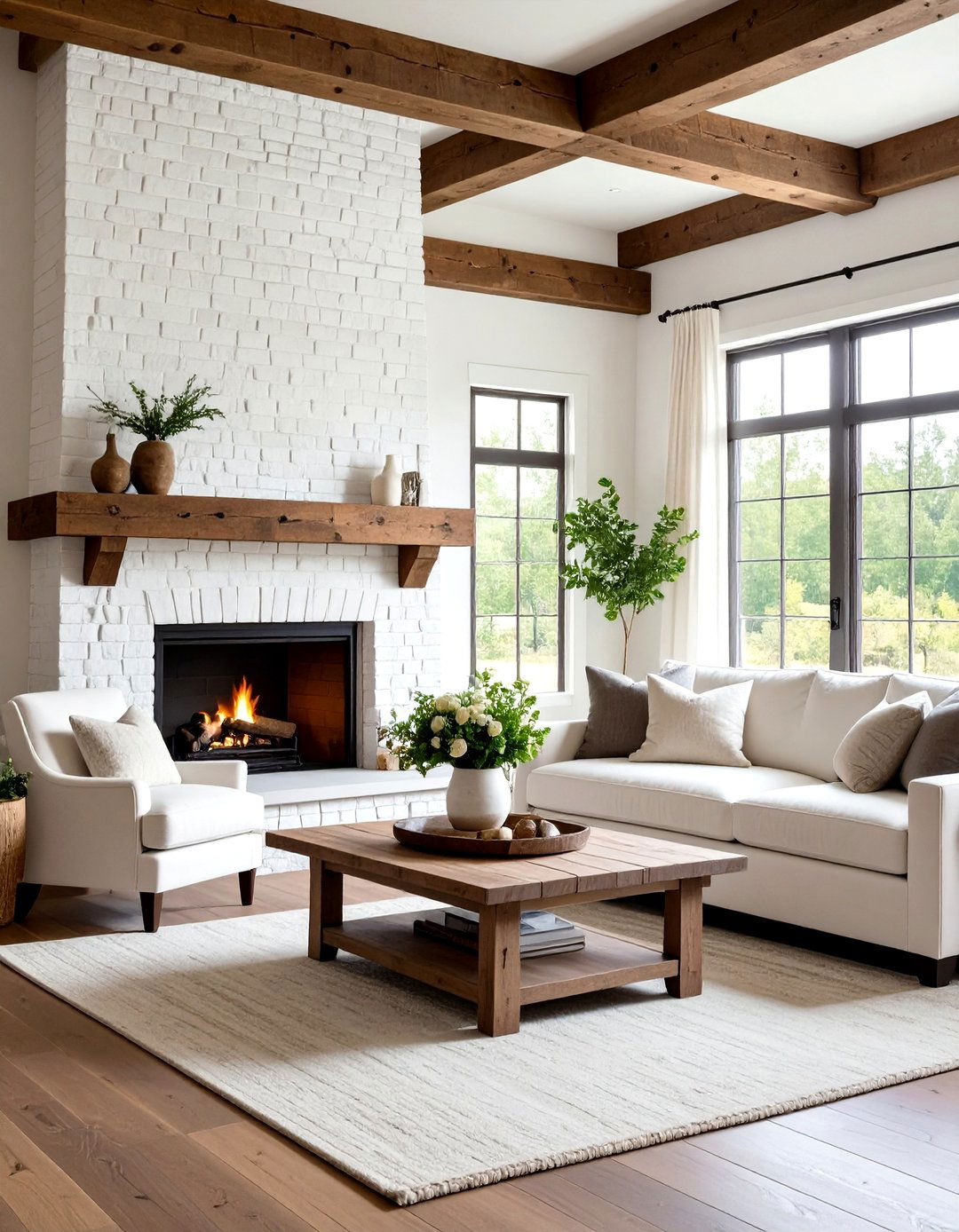
Transform your living space with a whitewashed rustic brick fireplace featuring a substantial reclaimed wood beam mantel. This design combines the soft, weathered appearance of diluted white paint over traditional red brick with the rich character of salvaged timber. The whitewashing technique allows the brick's natural texture and subtle color variations to show through while brightening the overall appearance. A thick, hand-hewn beam serves as the mantel, displaying visible saw marks and natural aging that speaks to generations of use. Complete the look with wrought iron fireplace tools, vintage brass candlesticks, and seasonal greenery arrangements. This combination creates a perfect balance between rustic authenticity and refined elegance, making it ideal for farmhouse, cottage, or transitional interior styles.
2. Traditional Red Rustic Brick Fireplace with Exposed Ceiling Beams
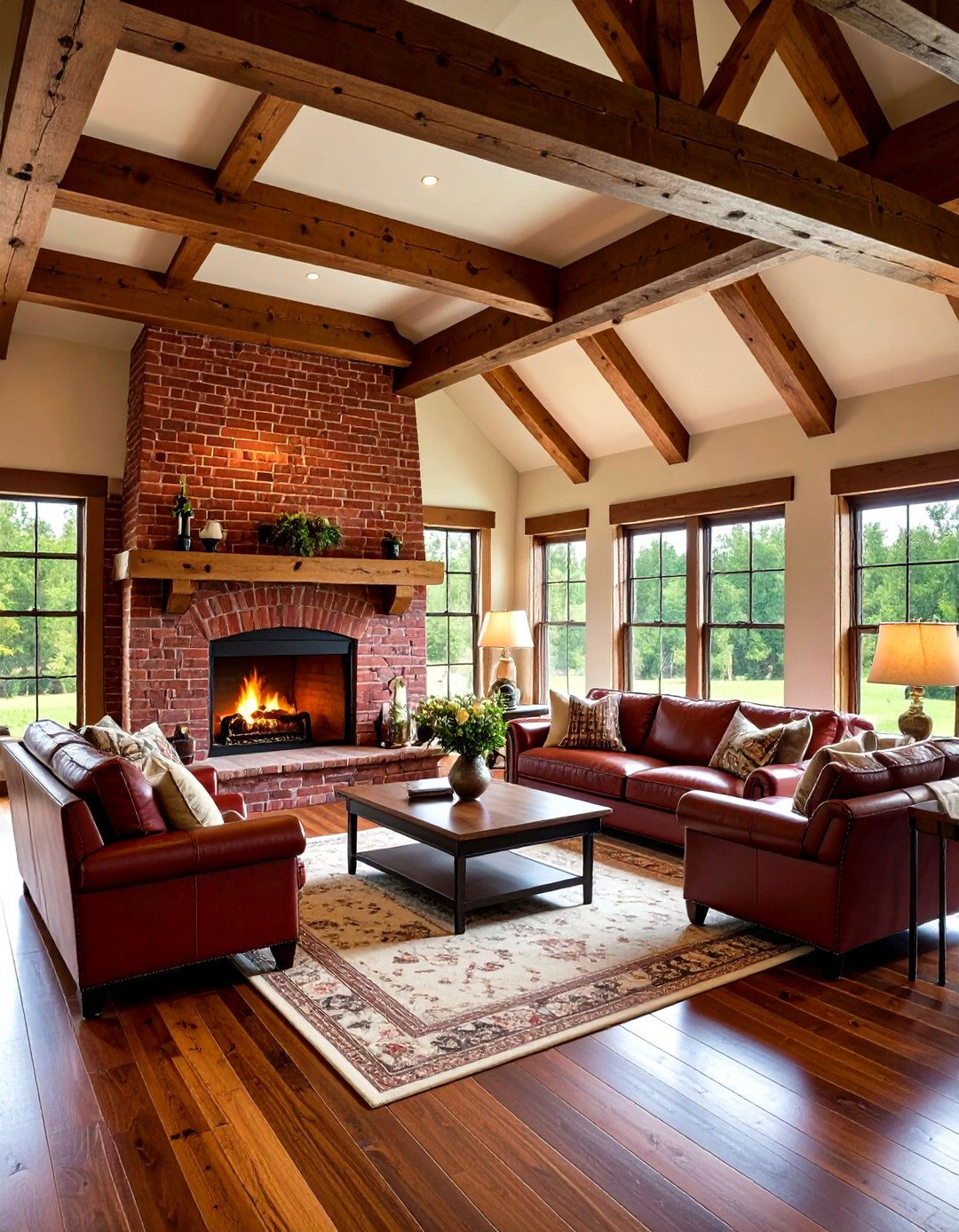
Embrace classic American craftsmanship with a traditional red rustic brick fireplace surrounded by exposed wooden ceiling beams. This design celebrates the natural beauty of clay brick in its most authentic form, featuring rich burgundy and terracotta tones that develop deeper character over time. Massive overhead beams, whether original to the structure or carefully installed additions, create architectural continuity that draws the eye upward and emphasizes the room's volume. The brick pattern typically follows traditional running bond or common bond layouts, with slightly irregular mortar joints that enhance the handcrafted appearance. Complement this design with leather furniture, wool textiles, and warm wood tones throughout the space. This approach works exceptionally well in cabins, lodges, and homes that prioritize authentic American heritage aesthetics.
3. German Schmear Rustic Brick Fireplace with Distressed Mantel
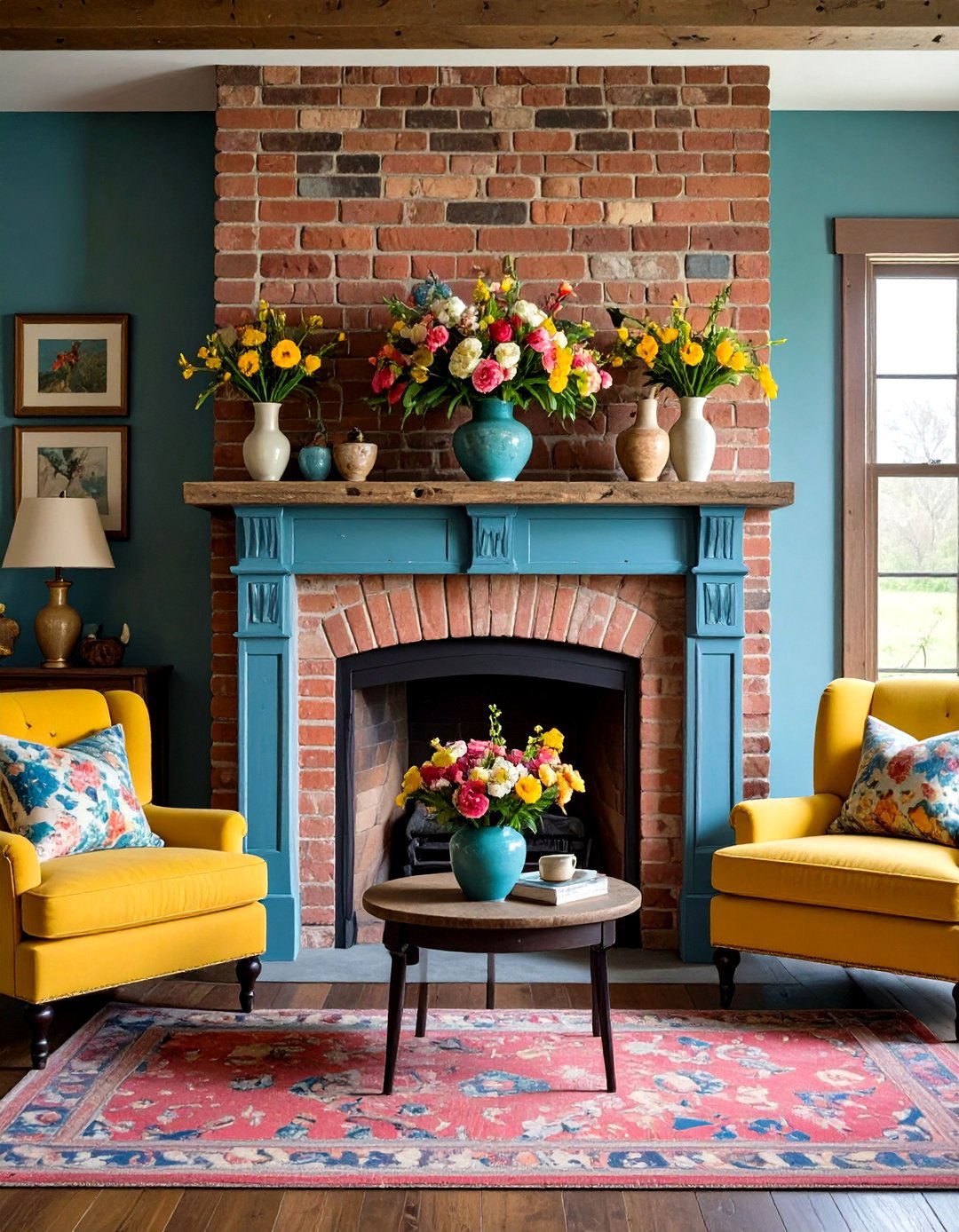
Create an Old World atmosphere with a German schmear rustic brick fireplace featuring intentionally distressed wooden elements. This technique involves applying wet mortar over existing brick and then removing portions while still damp, creating an irregular, heavily textured surface that mimics centuries of weathering. The resulting finish appears authentically aged, with thick mortar lines and varying coverage that gives each brick unique character. Pair this dramatic backdrop with a distressed wooden mantel that shows deliberate wear marks, paint layering, and weathered edges. The overall effect suggests a European farmhouse that has sheltered generations. Complete the aesthetic with vintage pottery, aged metals, and textiles in muted earth tones. This design particularly suits homes with traditional or eclectic decorating schemes that value historical authenticity and artisanal craftsmanship.
4. Floor-to-Ceiling Rustic Brick Fireplace Wall

Make a bold architectural statement with a floor-to-ceiling rustic brick fireplace wall that commands attention in any room. This design extends the brick material from hearth level all the way to the ceiling, creating dramatic vertical emphasis and serving as a substantial focal point. The continuous brick surface showcases the material's natural variations in color and texture while providing ample opportunities for creative pattern work, such as herringbone sections or decorative arches. Install a floating wooden mantel at appropriate height to break up the expanse and provide display space for artwork and accessories. This approach works particularly well in great rooms, open-plan living spaces, and contemporary homes where dramatic architectural features are desired. The substantial presence of floor-to-ceiling brick adds both visual weight and thermal mass to the space.
5. Thin Brick Veneer Rustic Fireplace with Modern Conveniences

Achieve the authentic look of traditional masonry with a thin brick veneer rustic fireplace that incorporates modern functionality and easier installation. This approach uses thin brick tiles or panels that replicate the appearance of full-depth brick while reducing weight and construction complexity. Choose from various rustic finishes including aged patinas, weathered textures, and traditional color variations from soft cream to deep burgundy. The streamlined profile allows for easier integration of modern conveniences such as gas inserts, electric systems, or smart home controls. Frame the installation with clean-lined surrounds in wood or stone to create a transitional aesthetic that honors traditional craftsmanship while embracing contemporary living. This solution particularly appeals to homeowners undertaking renovations or new construction where structural limitations make full brick installations challenging.
6. Mixed Material Rustic Brick Fireplace with Natural Stone Accents
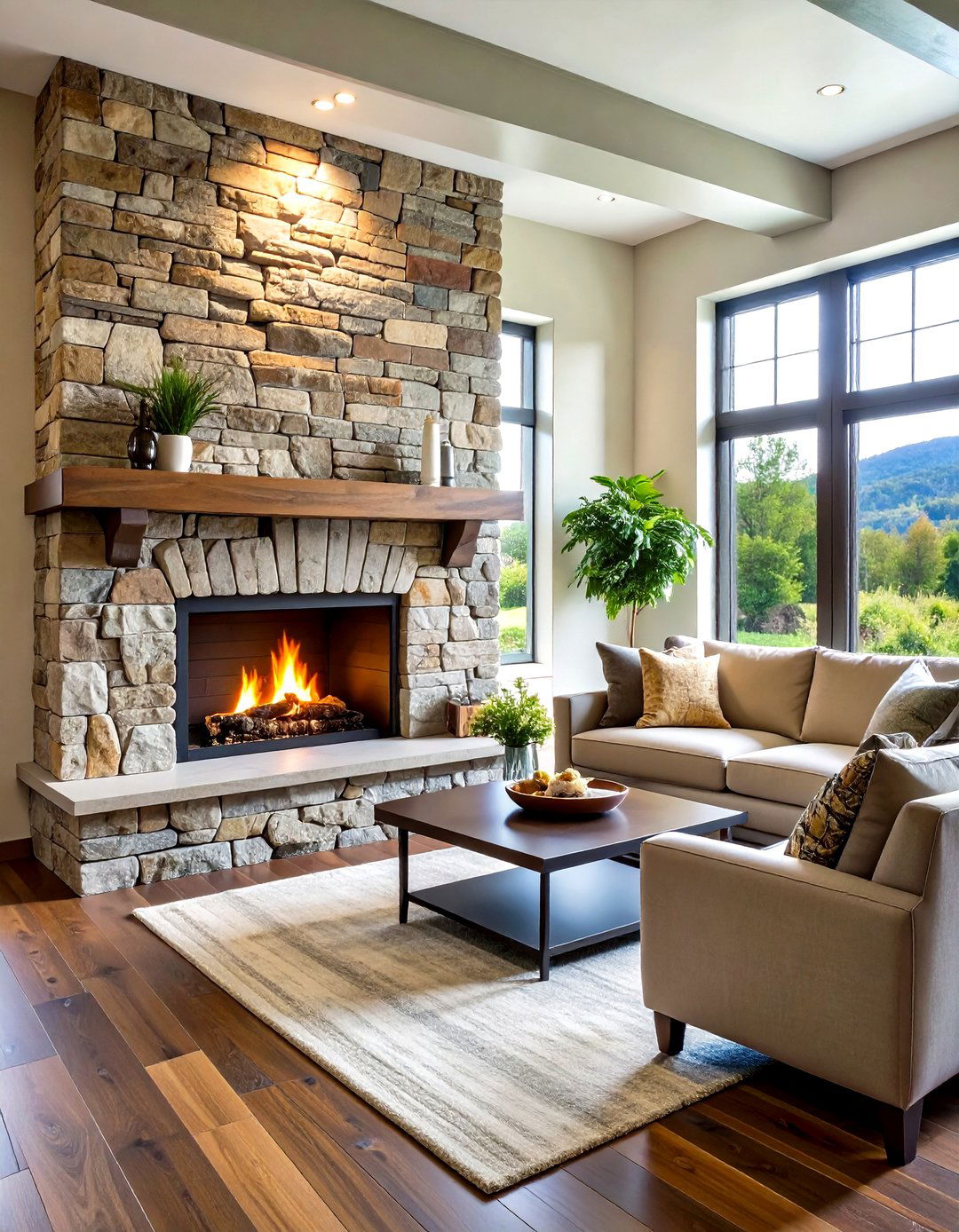
Combine the warmth of rustic brick with the organic beauty of natural stone to create a fireplace that celebrates multiple earth-based materials. This design typically features brick as the primary surround material while incorporating stone elements as accent bands, hearth surfaces, or decorative inlays. The contrast between brick's manufactured regularity and stone's organic irregularity creates visual interest and textural depth. Choose complementary materials such as slate, limestone, or fieldstone that share similar color undertones with your selected brick. The stone elements can serve functional purposes, such as a durable hearth surface, or purely decorative roles, such as accent strips that break up large brick expanses. Complete the mixed-media approach with a mantel that incorporates both materials or introduces a third element like reclaimed wood or metal. This design philosophy works well in rustic contemporary homes that value natural materials and artistic composition.
7. Painted Rustic Brick Fireplace in Bold Earth Tones

Break away from traditional red brick with a painted rustic brick fireplace featuring bold earth-tone colors that maintain rustic appeal while offering contemporary flair. Deep forest greens, rich navy blues, charcoal grays, or warm chocolate browns can transform the entire character of a brick fireplace while preserving its inherent texture and visual interest. The painting process requires proper preparation and high-quality masonry paint that can withstand heat and humidity changes. Maintain the rustic aesthetic by choosing colors inspired by nature and avoiding overly bright or artificial hues. Complement the bold fireplace color with neutral wall treatments and carefully selected accent pieces that echo the chosen tone. This approach particularly suits homeowners who want to maintain brick's textural appeal while adapting the color palette to match contemporary interior design schemes. The painted surface provides a dramatic backdrop for seasonal decorating and artwork displays.
8. Double-Sided Rustic Brick Fireplace Room Divider

Create functional separation and visual continuity with a double-sided rustic brick fireplace that serves multiple living areas simultaneously. This design acts as both a heating source and an architectural room divider, perfect for open-plan homes where defined spaces are desired without solid walls. The shared firebox provides warmth and ambiance to adjacent areas such as living and dining rooms, while the substantial brick construction adds thermal mass and acoustic buffering. Design considerations include ensuring adequate structural support and proper ventilation for the dual-access firebox. The brick work can extend partially or fully to the ceiling, depending on the desired level of separation. Frame each side with appropriate mantels and surrounds that complement the specific function of each space. This approach maximizes both the practical and aesthetic value of the fireplace investment while creating a sophisticated architectural feature.
9. Outdoor Rustic Brick Fireplace with Weather-Resistant Features

Extend comfortable living seasons with an outdoor rustic brick fireplace designed to withstand natural elements while providing cozy gathering space. This design requires specialized construction techniques and materials selected for freeze-thaw resistance, moisture protection, and UV stability. The brick selection should prioritize durability over appearance, though many weather-resistant options maintain beautiful rustic character. Design features might include protective overhangs, drainage systems, and sealed mortar joints to ensure longevity. The surrounding area benefits from weather-resistant seating, durable flooring materials like stone or concrete, and wind protection through landscaping or architectural elements. Consider incorporating wood storage, cooking surfaces, or built-in seating to maximize functionality. The outdoor rustic brick fireplace becomes a natural focal point for entertaining and extends usable outdoor space well into cooler months, adding significant value to the property and lifestyle enhancement opportunities.
10. Industrial-Modern Rustic Brick Fireplace with Metal Accents

Blend rustic brick with industrial design elements to create a fireplace that bridges traditional and contemporary aesthetics. This approach combines the warmth and texture of brick with the sleek functionality of metal components such as steel mantels, iron fireplace screens, and exposed ductwork or structural elements. The brick might feature a more uniform appearance or even painted finish to complement the industrial elements while maintaining textural interest. Metal components should display authentic industrial characteristics like visible welds, patina finishes, or deliberately rough textures. This design philosophy works particularly well in loft spaces, converted industrial buildings, or contemporary homes that value the contrast between warm organic materials and cool manufactured elements. The resulting fireplace serves as a sophisticated focal point that celebrates both craftsmanship traditions and modern design innovation.
11. Farmhouse Style Rustic Brick Fireplace with Shiplap Integration
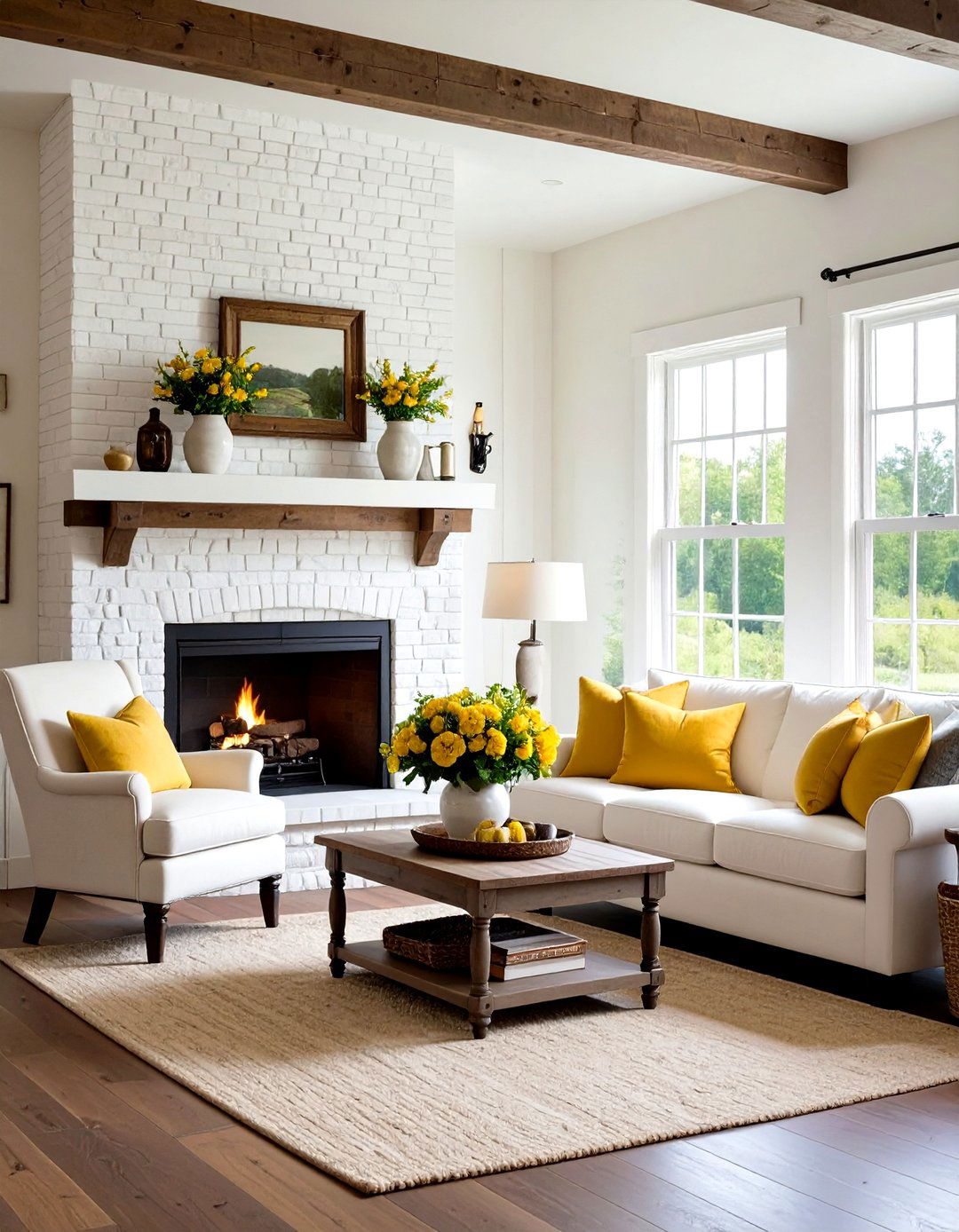
Combine classic farmhouse elements by integrating shiplap paneling with rustic brick fireplace construction for a cohesive country-inspired design. This approach typically features whitewashed or painted brick as the fireplace surround while incorporating horizontal shiplap boards on adjacent walls or as accent panels within the fireplace design itself. The shiplap can extend from floor to ceiling, creating wainscoting effects, or serve as accent strips that break up large brick expanses. Choose paint colors that complement both materials, often favoring whites, creams, or soft pastels that enhance the farmhouse aesthetic. Complete the look with period-appropriate hardware, vintage accessories, and natural textiles. This design creates a cohesive environment that feels authentically rural while providing modern comfort and convenience. The combination works particularly well in country homes, modern farmhouse designs, or any space that values traditional American architectural character.
12. Live Edge Wood Mantel Rustic Brick Fireplace
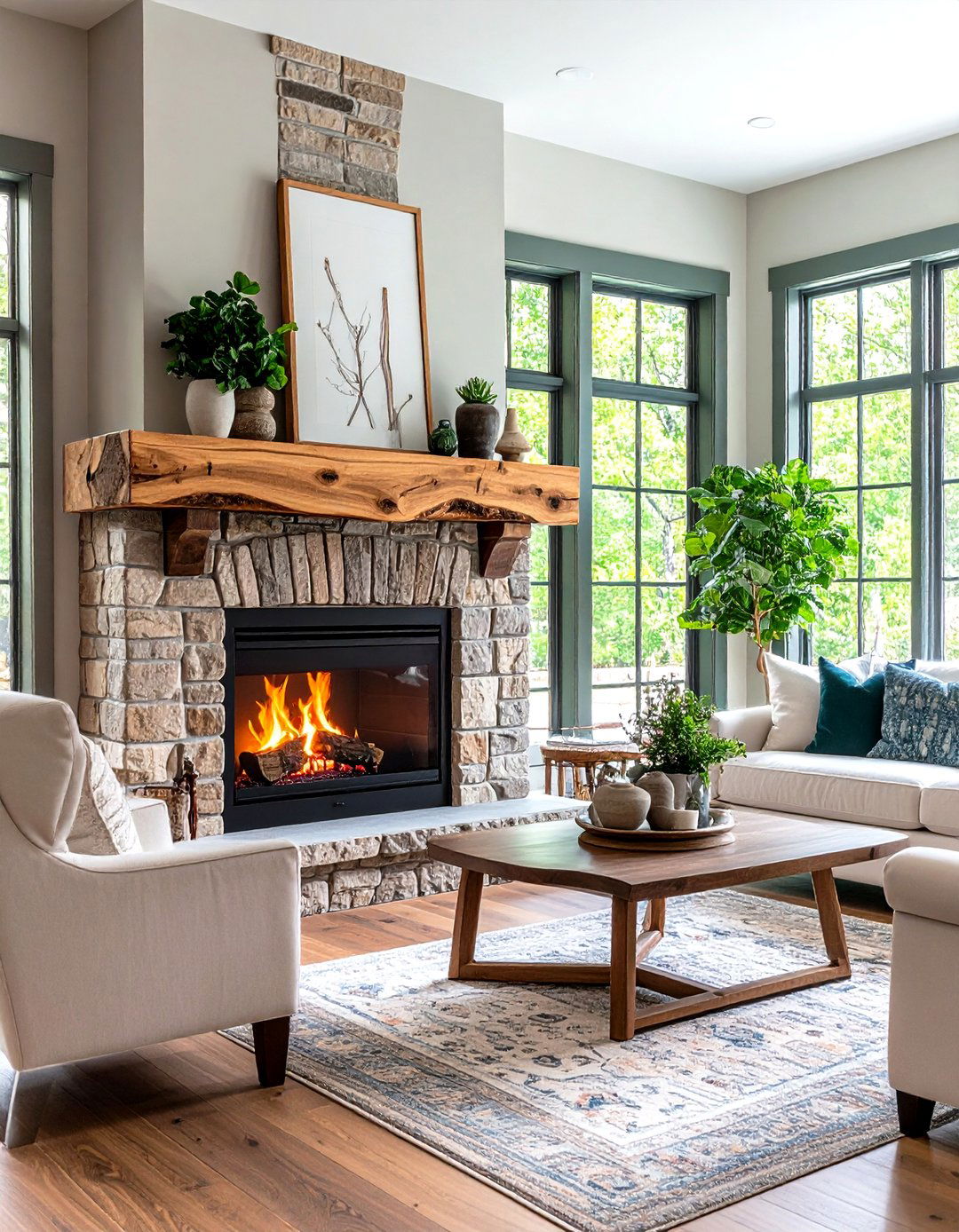
Showcase nature's artistry with a rustic brick fireplace topped by a live edge wood mantel that preserves the tree's natural contours. This design celebrates organic forms by maintaining the bark edge or natural tree shape while creating a substantial mantel surface for display and decoration. The contrast between the manufactured regularity of brick and the organic irregularity of live edge wood creates compelling visual tension. Choose wood species that complement the brick coloring, whether matching warm tones or providing deliberate contrast. The live edge mantel requires substantial support systems due to potential weight and irregular mounting challenges. The natural wood should be properly sealed and finished to handle heat exposure and humidity changes. This approach particularly appeals to homeowners who value natural materials, artisanal craftsmanship, and unique architectural features that cannot be replicated. The resulting fireplace becomes a true conversation piece that connects interior spaces with the natural world.
13. Built-In Shelving Rustic Brick Fireplace System
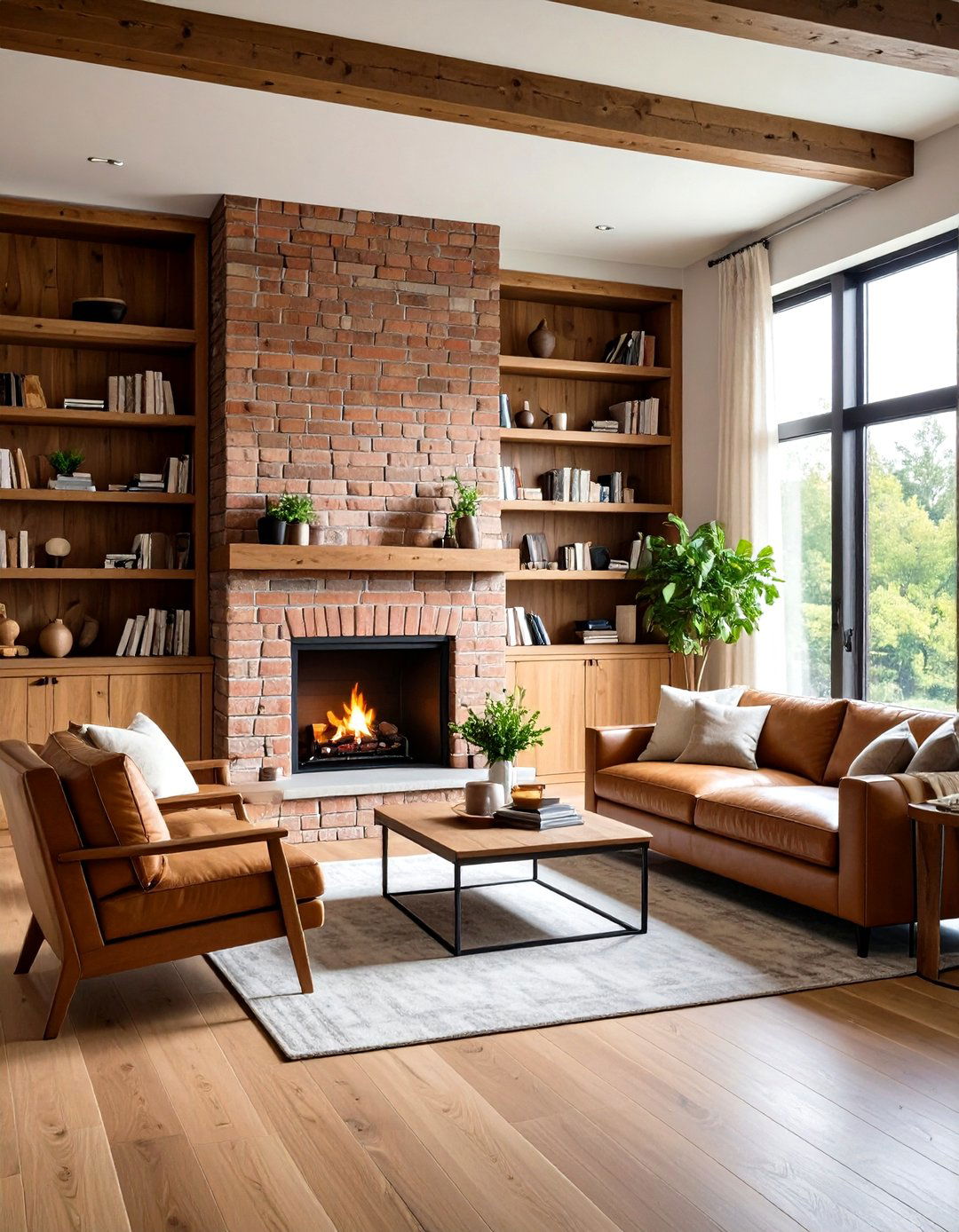
Maximize functionality and visual impact with a rustic brick fireplace surrounded by integrated built-in shelving that provides storage and display opportunities. This comprehensive approach treats the fireplace as the centerpiece of a larger wall system that might include bookcases, media storage, or decorative niches. The brick fireplace anchors the composition while surrounding shelving, typically constructed from matching wood materials, provides practical storage and display space for books, artwork, and personal collections. Design considerations include proper proportions to ensure the fireplace remains the focal point while providing adequate storage capacity. The shelving can extend to the ceiling for maximum impact or stop at mantel height for a more intimate scale. This approach works particularly well in family rooms, dens, or great rooms where both ambiance and functionality are priorities. The integrated design creates a custom, built-in appearance that adds significant value and character to the space.
14. Arched Opening Rustic Brick Fireplace
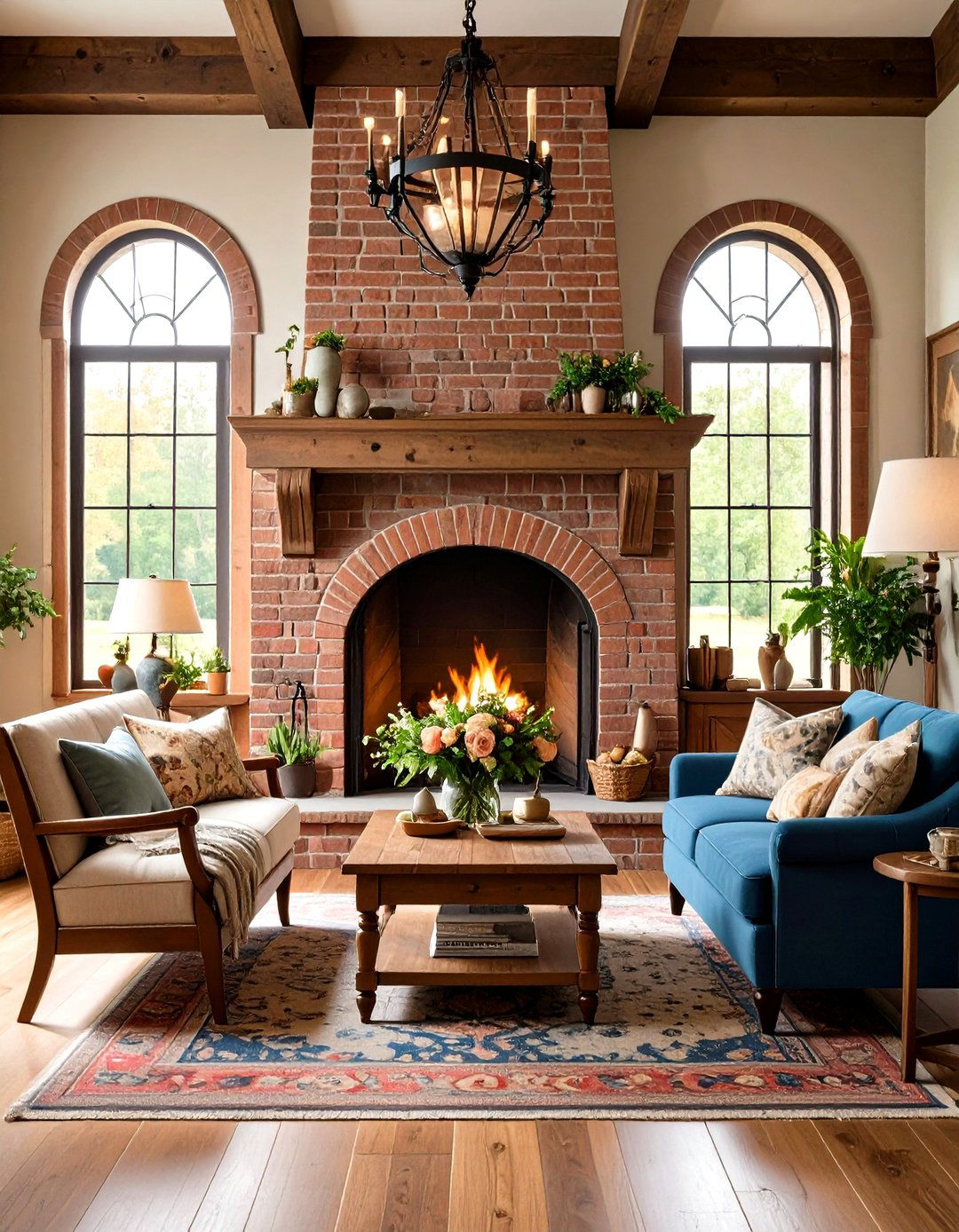
Create architectural elegance with a rustic brick fireplace featuring a carefully crafted arched opening that adds sophistication to traditional masonry construction. This design requires skilled craftsmanship to properly form the curved opening while maintaining structural integrity and visual appeal. The arch can follow various profiles from gentle curves to dramatic gothic points, depending on the desired aesthetic and architectural context. Surrounding brickwork might feature special laying patterns, decorative bonds, or contrasting mortar colors to emphasize the arch's importance. The curved opening softens the geometric regularity of brick construction while creating a more intimate relationship with the fire itself. This approach works particularly well in traditional, Mediterranean, or colonial-inspired homes where architectural detail and craftsmanship are valued. The arched opening creates visual interest and breaks up what might otherwise be a simple rectangular opening, adding sophistication and historical reference to the design.
15. Corner Placement Rustic Brick Fireplace
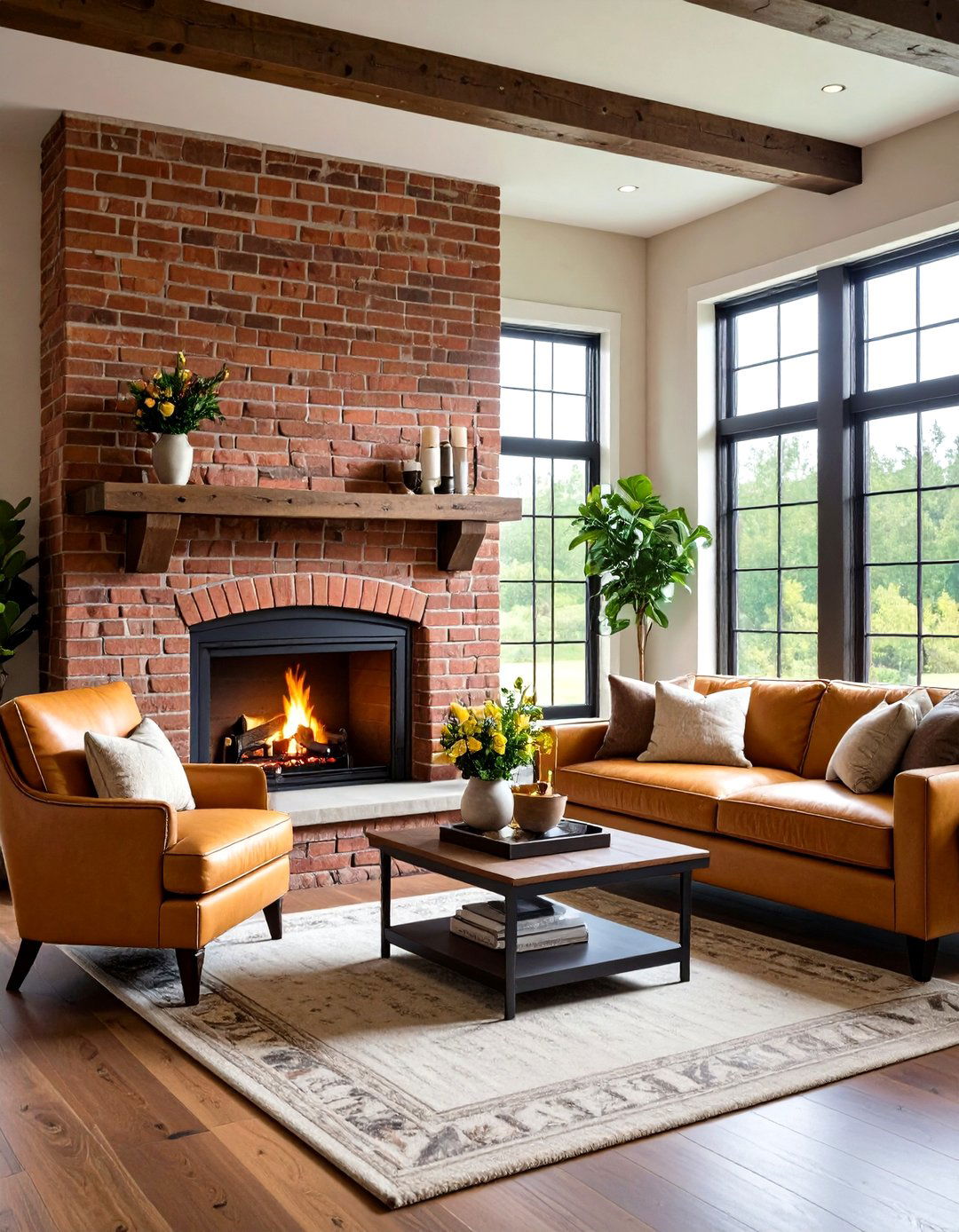
Optimize space efficiency and create unique architectural interest with a corner-placed rustic brick fireplace that transforms often-underutilized areas into compelling focal points. This design approach works particularly well in smaller rooms or spaces with challenging layouts where a traditional wall placement might not be practical. The corner location requires careful attention to proper angles, structural support, and ventilation considerations. The brick work can extend up the adjacent walls to varying heights, creating either subtle accent areas or dramatic floor-to-ceiling installations. Corner fireplaces often benefit from asymmetrical mantel designs or built-in seating areas that take advantage of the unique positioning. This placement strategy maximizes usable wall space while creating intimate conversation areas. The corner fireplace becomes a cozy anchor point that draws people together while efficiently heating the surrounding area. This approach particularly suits contemporary homes, small spaces, or rooms with multiple access points where traditional placement might interfere with traffic flow.
16. Rustic Brick Fireplace with Decorative Corbel Details
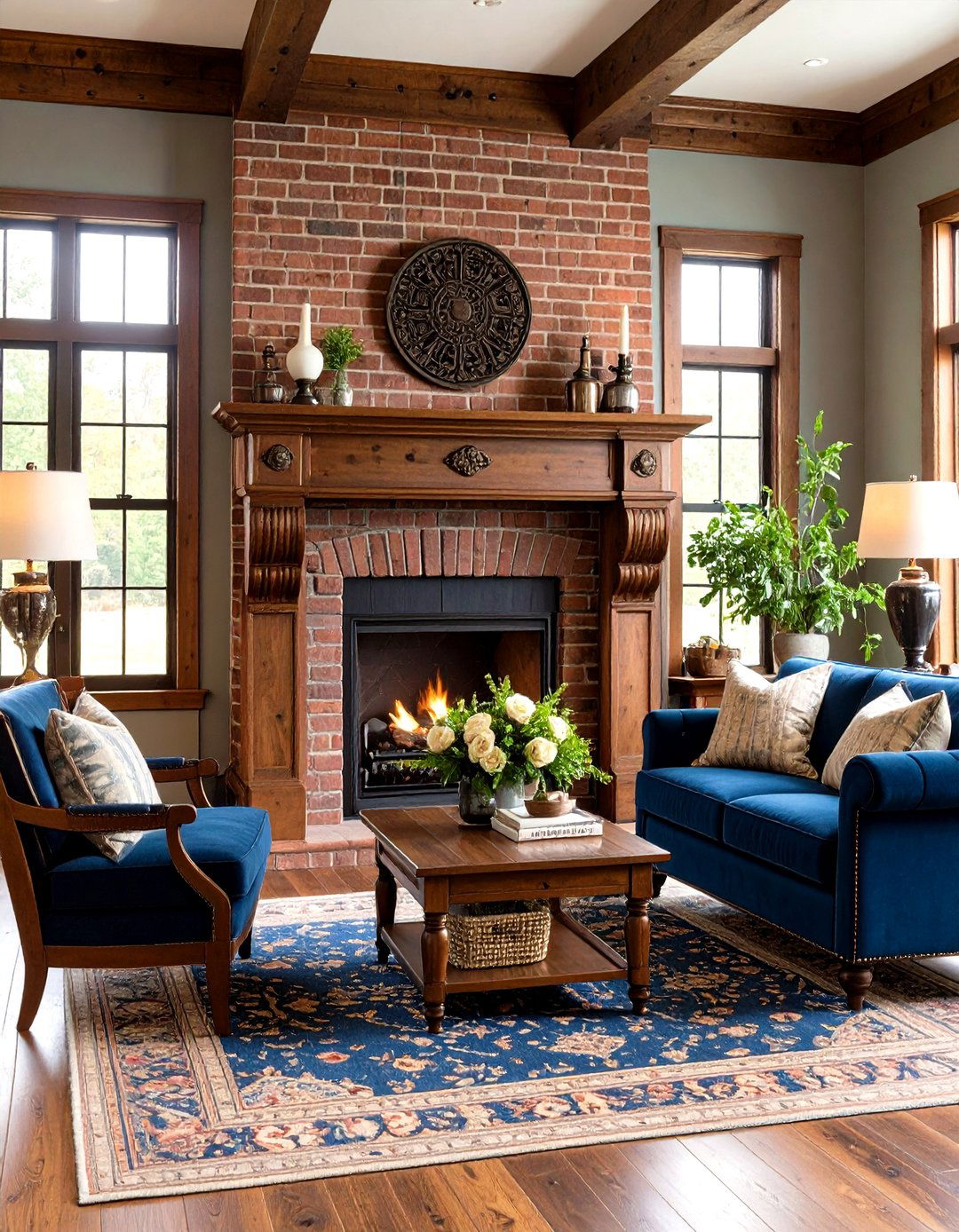
Enhance architectural character with a rustic brick fireplace featuring substantial wooden corbels that provide both structural support and decorative appeal. These carved or shaped brackets extend from the brick surface to support heavy wooden mantels while adding visual weight and traditional craftsmanship details. Corbels can range from simple angular forms to elaborate carved designs featuring scrollwork, floral motifs, or geometric patterns. The wood selection should complement both the brick coloring and the overall room aesthetic, whether matching existing woodwork or providing deliberate contrast. Proper installation requires secure mounting into the brick structure and adequate support for the mantel weight and any decorative items. This approach references historical architectural traditions while providing opportunities for customization and personalization. The corbel-supported mantel creates substantial visual presence while demonstrating attention to traditional building techniques and decorative arts. This design works particularly well in homes that value historical references and artisanal craftsmanship details.
17. Aged Patina Rustic Brick Fireplace with Vintage Accessories
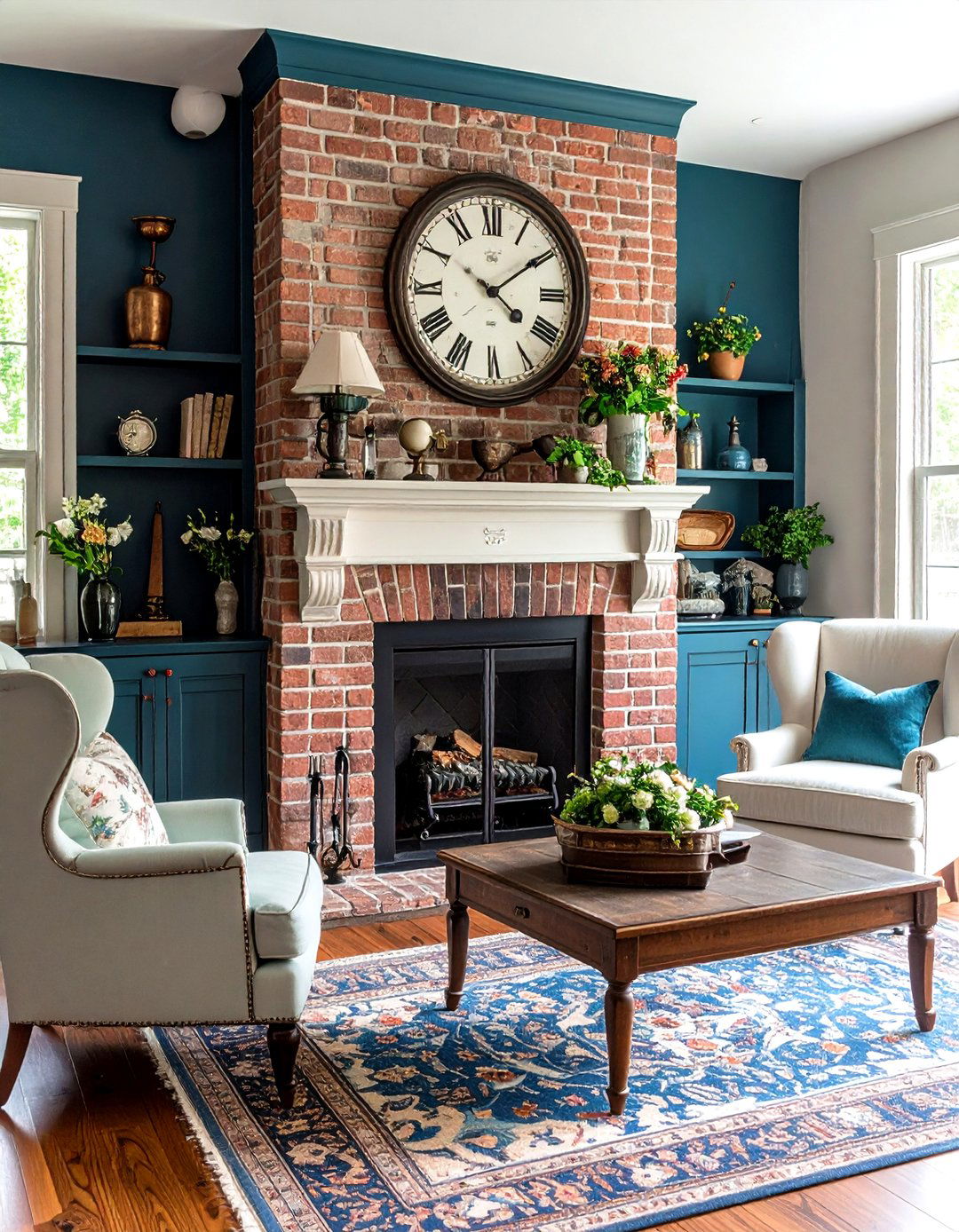
Develop authentic historical character with a rustic brick fireplace featuring deliberately aged patina finishes complemented by carefully selected vintage accessories and period-appropriate details. This approach uses various techniques to accelerate the natural aging process, including limewash applications, selective staining, or controlled weathering to achieve surfaces that appear decades or centuries old. The aging process affects both brick and mortar, creating subtle color variations and surface textures that suggest long exposure to heat, smoke, and time. Complement the aged brick with authentic vintage accessories such as antique fireplace tools, period mantel clocks, vintage pottery, or historical artwork. The surrounding area benefits from period-appropriate lighting fixtures, traditional textiles, and furniture pieces that support the historical narrative. This design creates environments that feel authentically historical while providing modern comfort and safety features. The approach particularly appeals to homeowners who value historical preservation, antique collecting, or creating spaces with strong narrative character.
18. Natural Stone Base Rustic Brick Fireplace Combination
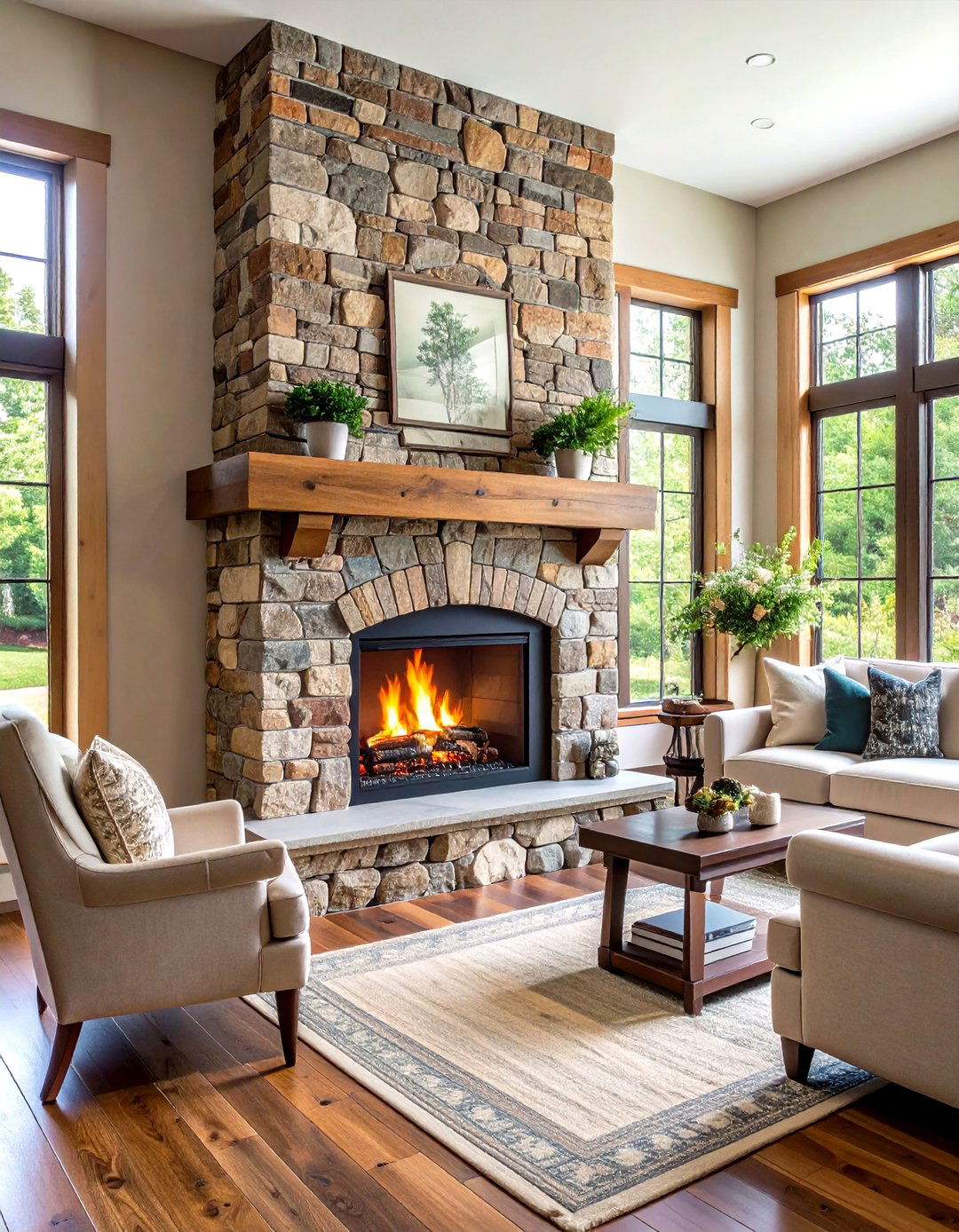
Create visual foundation and material transition with a rustic brick fireplace featuring a natural stone base that provides both practical and aesthetic benefits. This design typically uses fieldstone, limestone, or slate as the lower portion of the fireplace construction, with brick beginning at hearth level and extending upward. The stone base provides durability for the high-wear hearth area while creating interesting material contrast and visual weight at the bottom of the composition. The transition between stone and brick requires careful detailing to ensure smooth visual flow while maintaining structural integrity. Color coordination between materials is crucial, whether matching tones for subtle transition or choosing contrasting materials for dramatic effect. The stone base can extend beyond the fireplace footprint to create expanded hearth areas or seating surfaces. This approach references traditional building techniques where local materials were combined for both practical and economic reasons, creating fireplace designs that feel naturally integrated with their surroundings and demonstrate understanding of material properties.
19. Reclaimed Material Focus Rustic Brick Fireplace
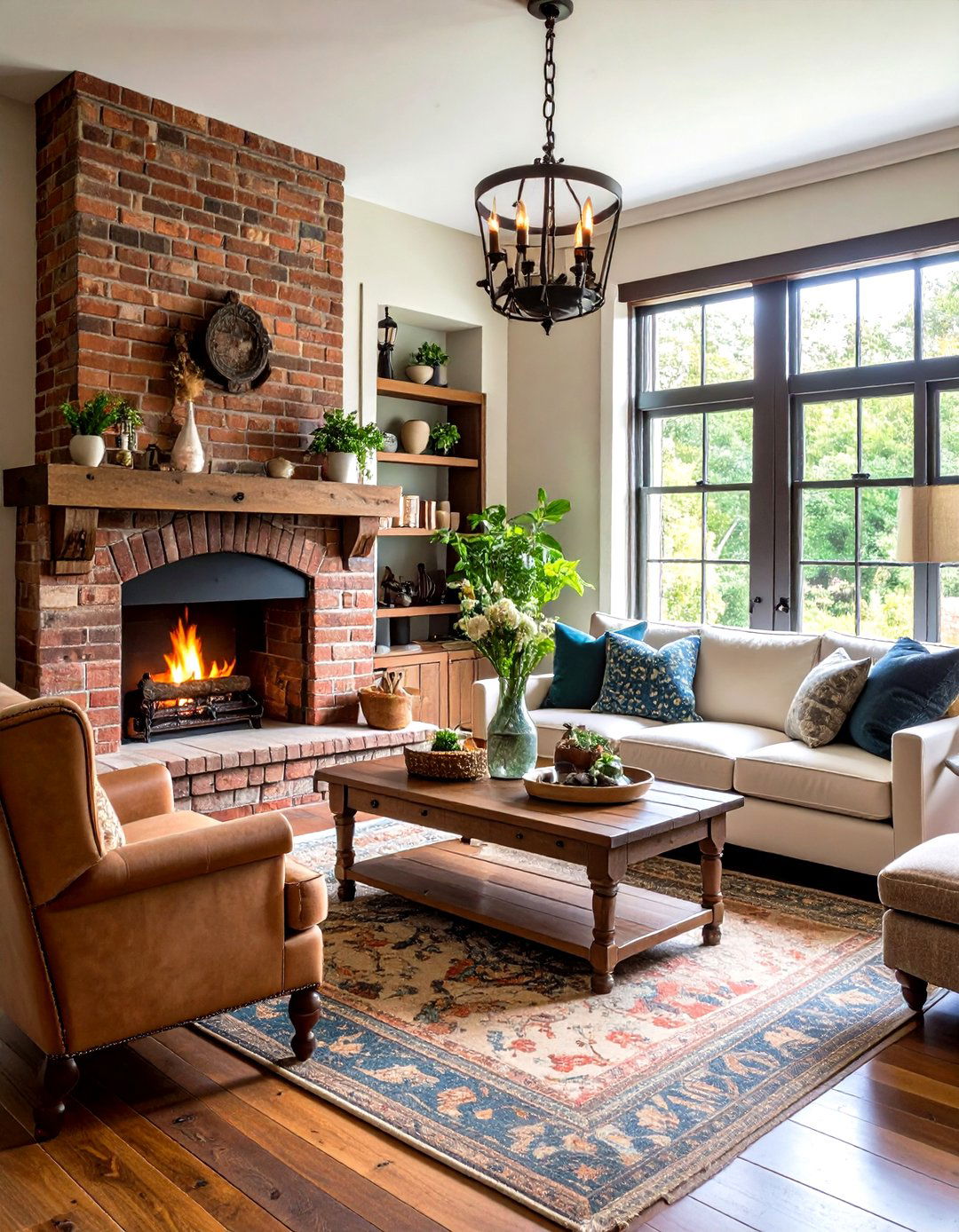
Emphasize sustainability and historical preservation with a rustic brick fireplace constructed primarily from reclaimed materials that carry stories and character from previous uses. This approach sources brick from demolished buildings, old streets, or abandoned structures, ensuring each element brings unique patina and weathering patterns. Reclaimed materials often display color variations, surface textures, and structural marks that cannot be replicated in new construction. The design process requires careful selection and preparation of reclaimed elements while ensuring they meet current building codes and safety requirements. Complement reclaimed brick with salvaged wood mantels, vintage hardware, and other architectural elements that support the historical narrative. This approach appeals to environmentally conscious homeowners while creating fireplace designs with authentic character and historical significance. The reclaimed material focus creates conversation pieces that connect present living with past craftsmanship traditions, making each fireplace unique and irreplaceable while supporting sustainable building practices.
20. Textured Mortar Joint Rustic Brick Fireplace
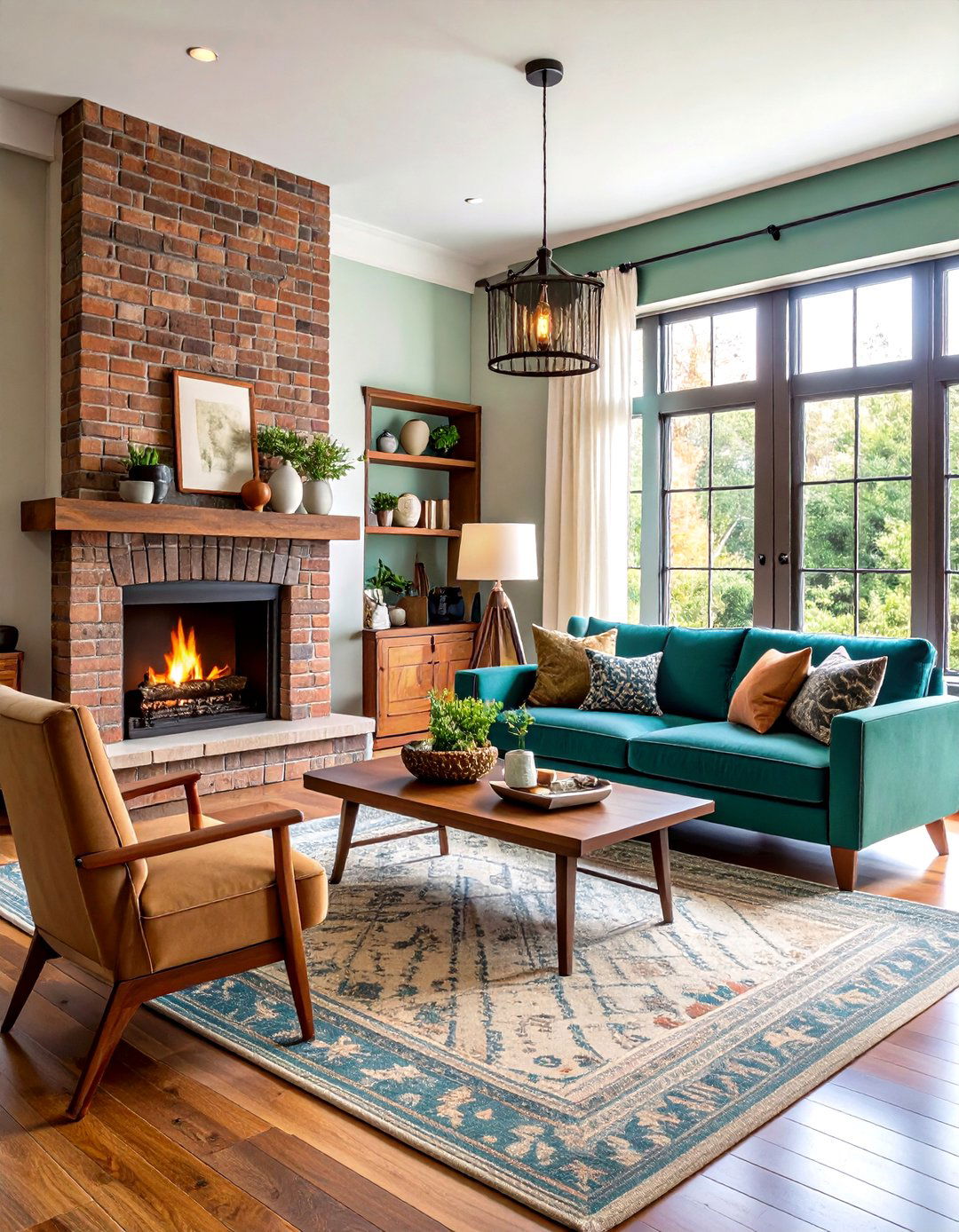
Showcase masonry craftsmanship with a rustic brick fireplace featuring deliberately textured mortar joints that add visual interest and handcrafted character to the overall design. This approach emphasizes the mortar as a decorative element rather than simply structural necessity, using techniques such as raked joints, beaded profiles, or irregular tooling to create shadow lines and surface variation. The mortar color can contrast with or complement the brick, whether choosing traditional gray, warm cream, or even colored mortars that enhance the overall composition. Textured joints require skilled craftsmanship and additional time during construction but create fireplace surfaces with exceptional visual depth and artisanal character. The joint treatment can vary across the fireplace surface, creating patterns or emphasis areas that guide the eye and add sophistication to what might otherwise be simple brickwork. This attention to detail demonstrates appreciation for traditional masonry techniques while creating fireplace designs that showcase the builder's skill and the homeowner's commitment to quality craftsmanship and authentic materials.
Conclusion:
Rustic brick fireplaces remain timeless focal points that blend traditional craftsmanship with contemporary living needs. From whitewashed farmhouse aesthetics to industrial-modern combinations, these 20 design approaches demonstrate the versatility and enduring appeal of brick construction. Whether incorporating reclaimed materials, textured finishes, or mixed-media elements, each style creates unique character while providing warmth and gathering spaces. The key to successful rustic brick fireplace design lies in understanding how materials, proportions, and surrounding elements work together to create cohesive environments that feel both authentic and comfortable for modern living.


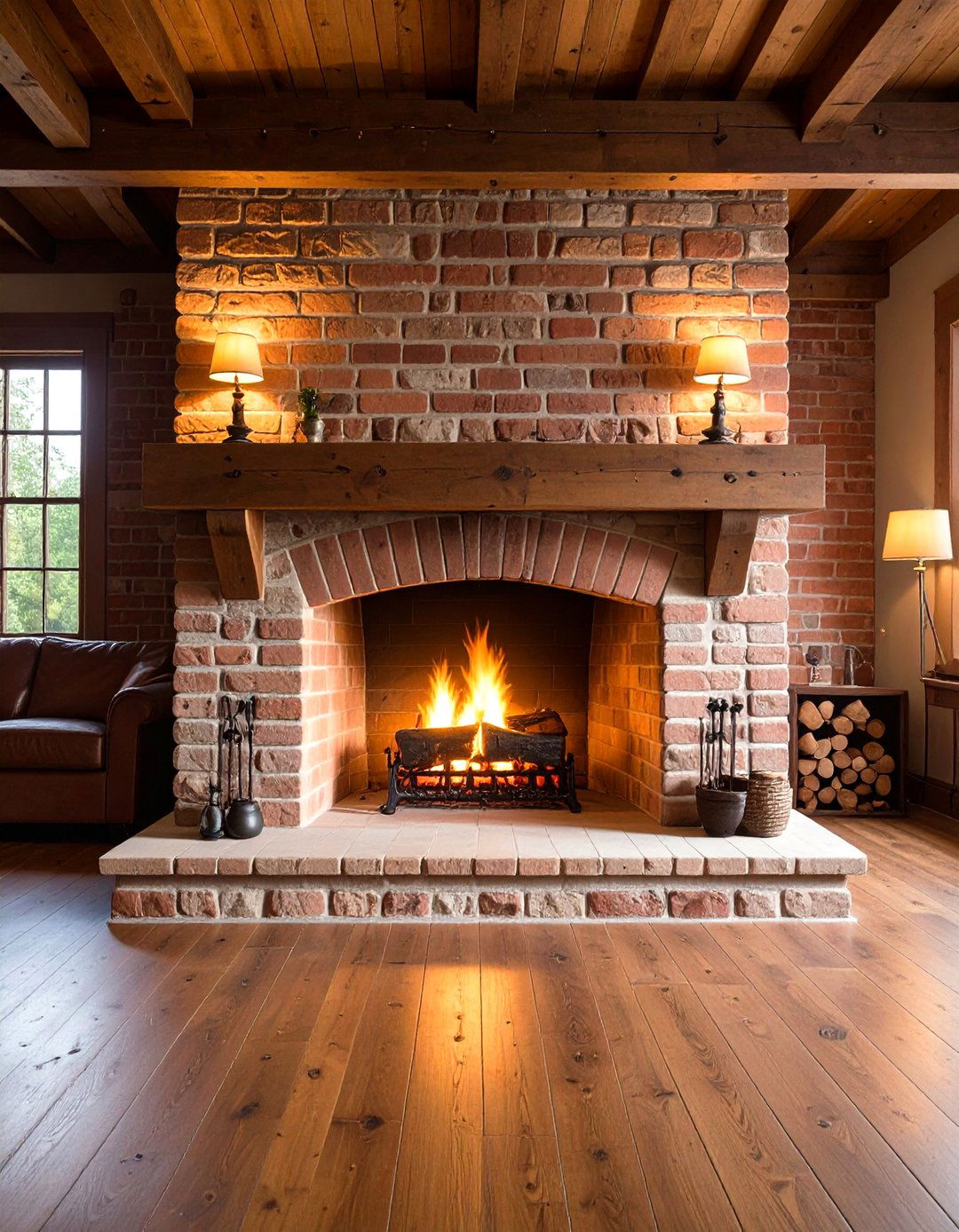

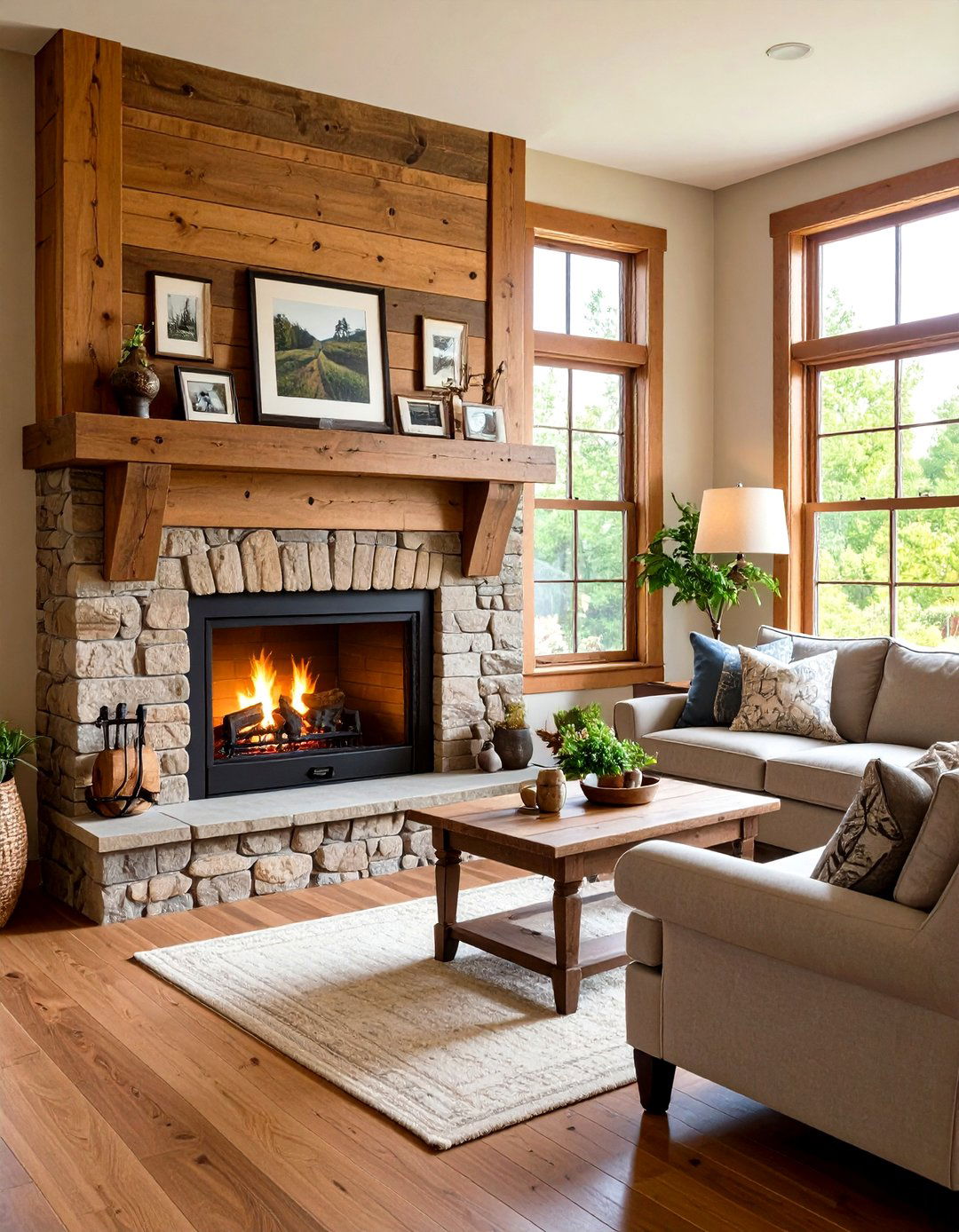
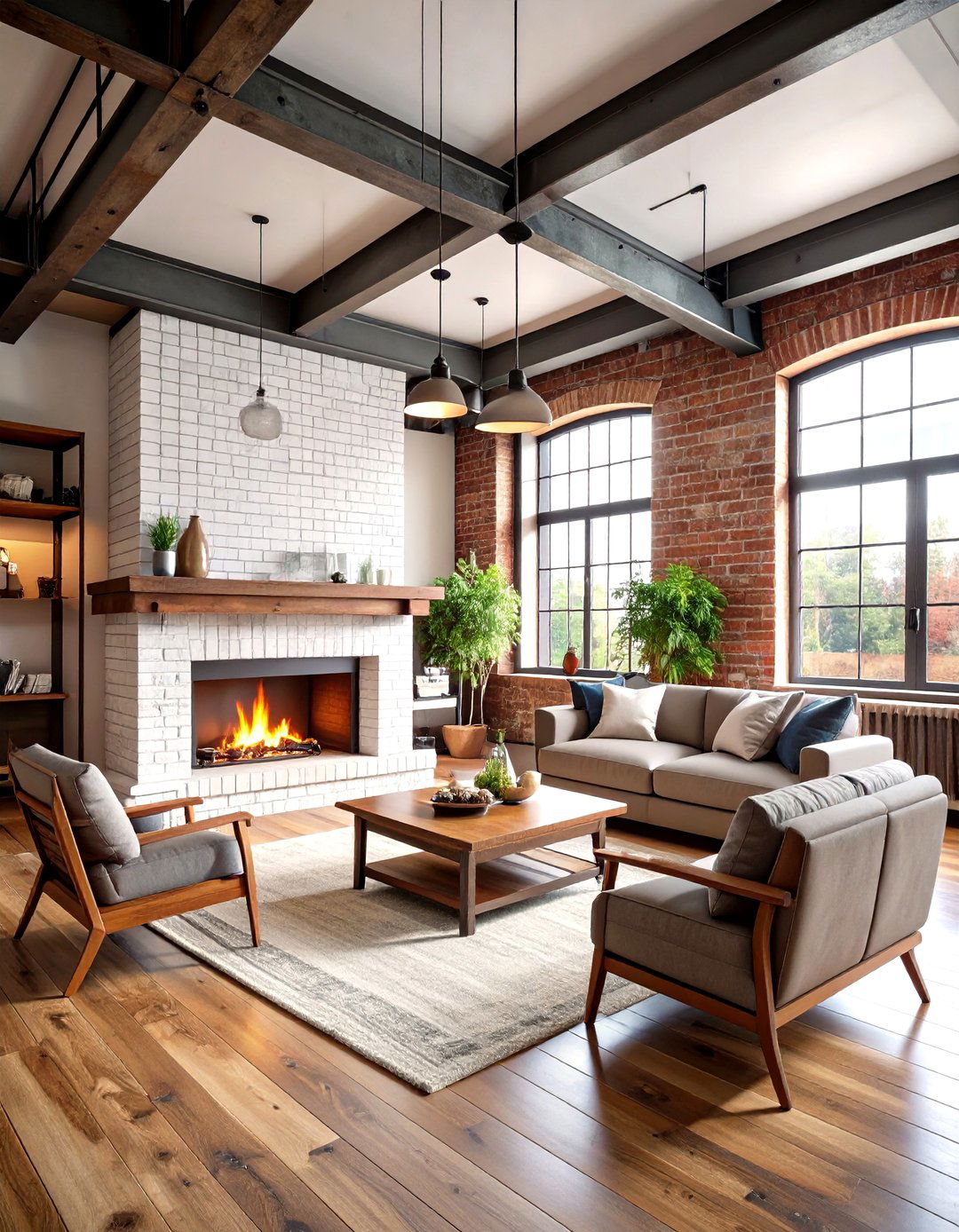
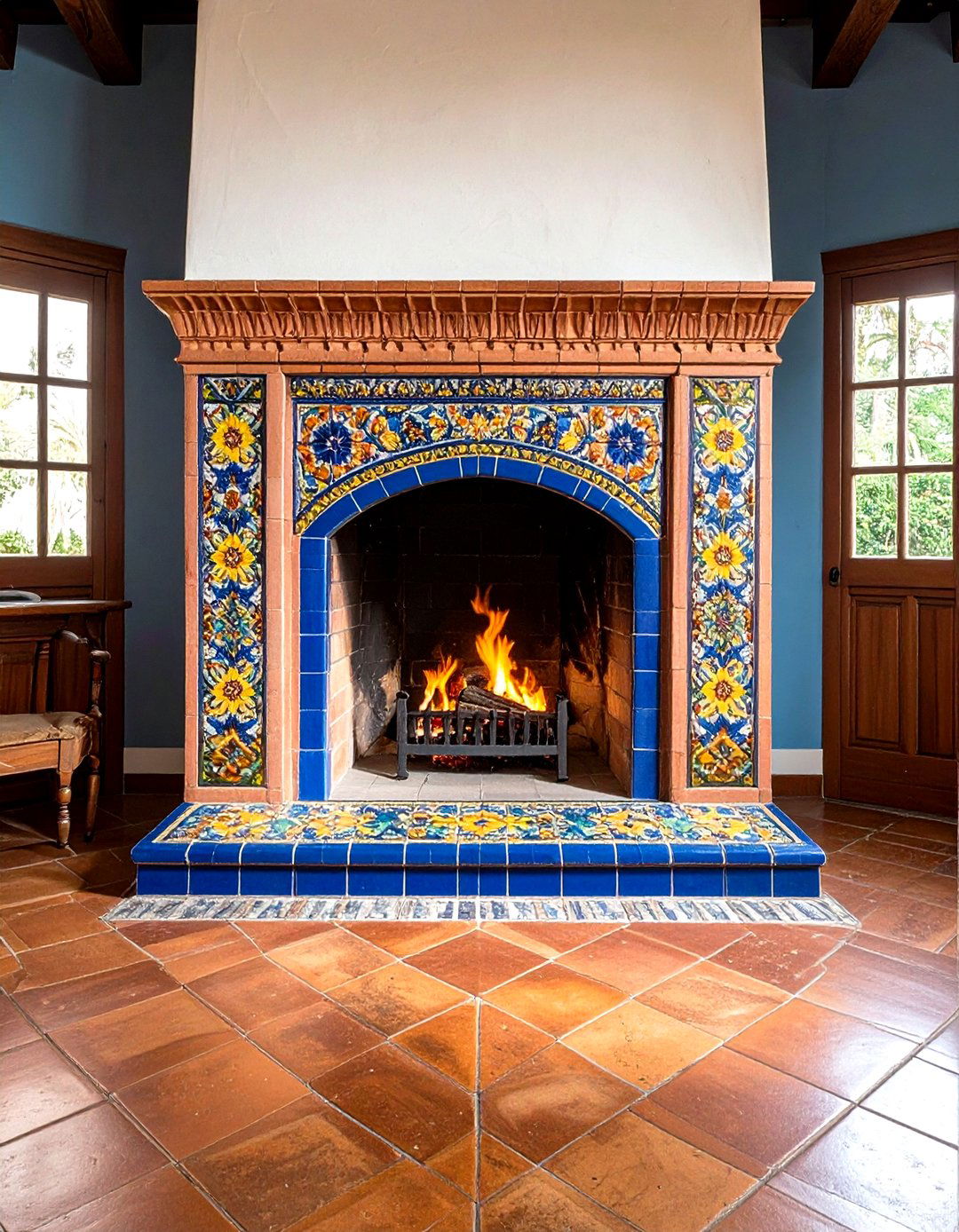
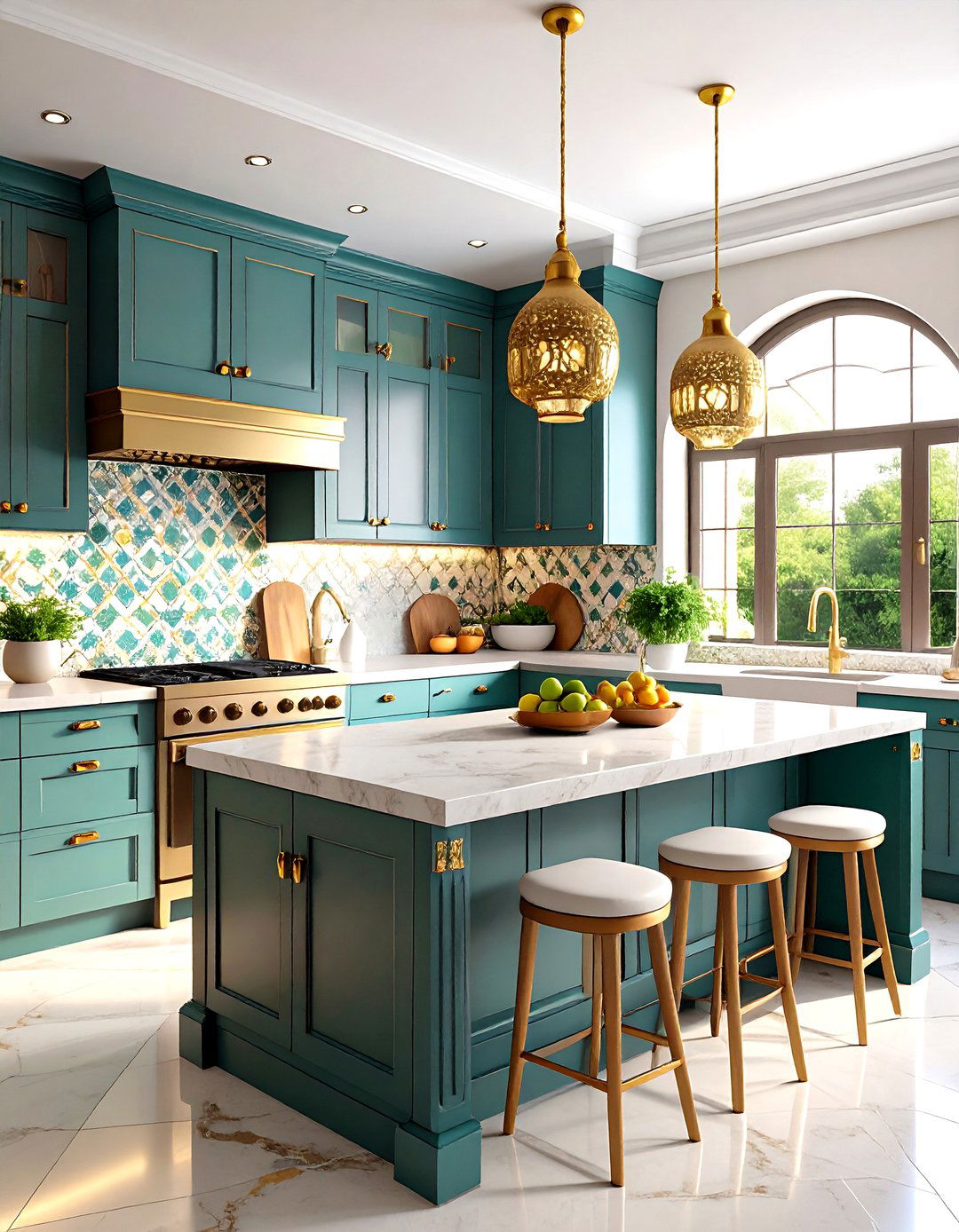
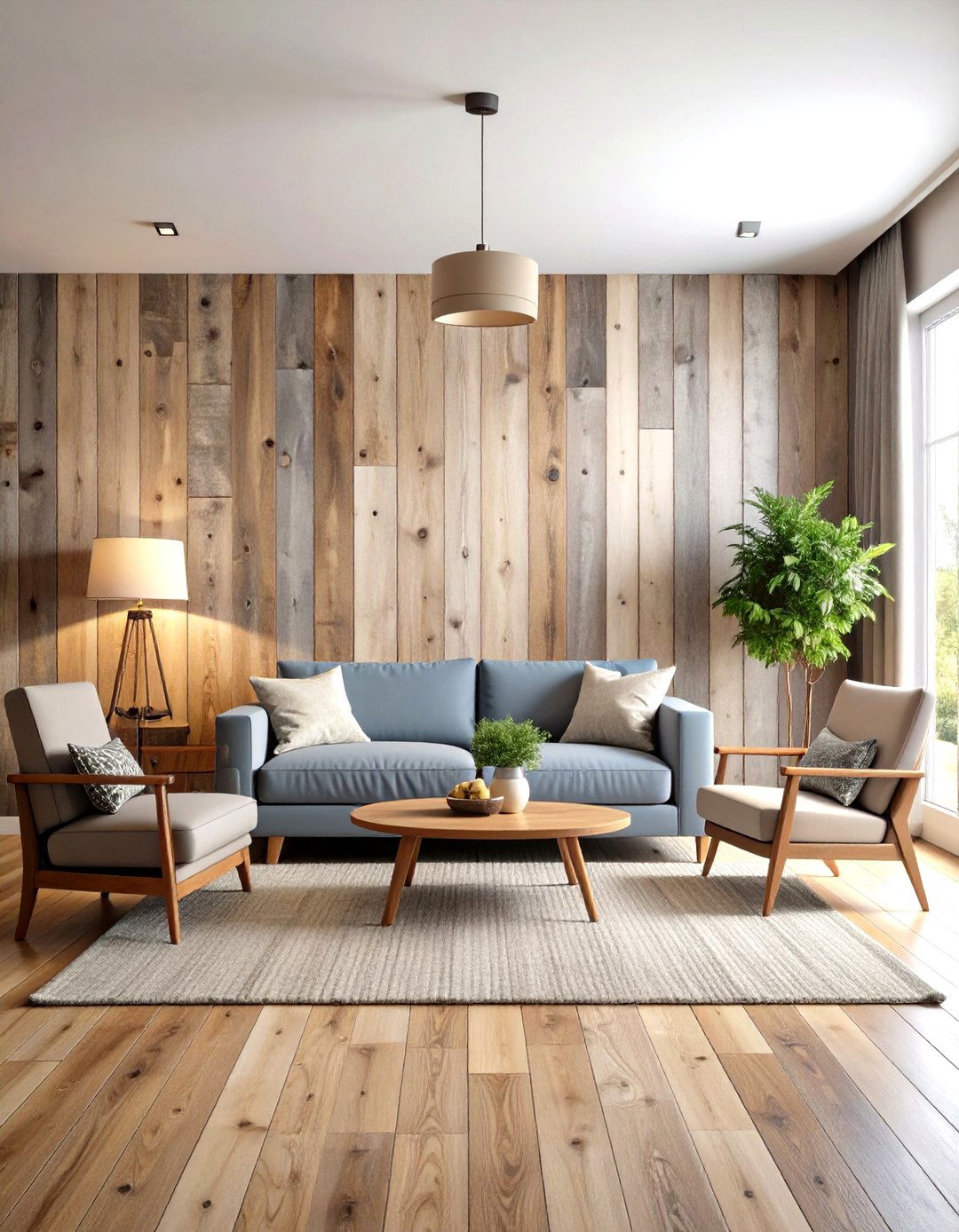
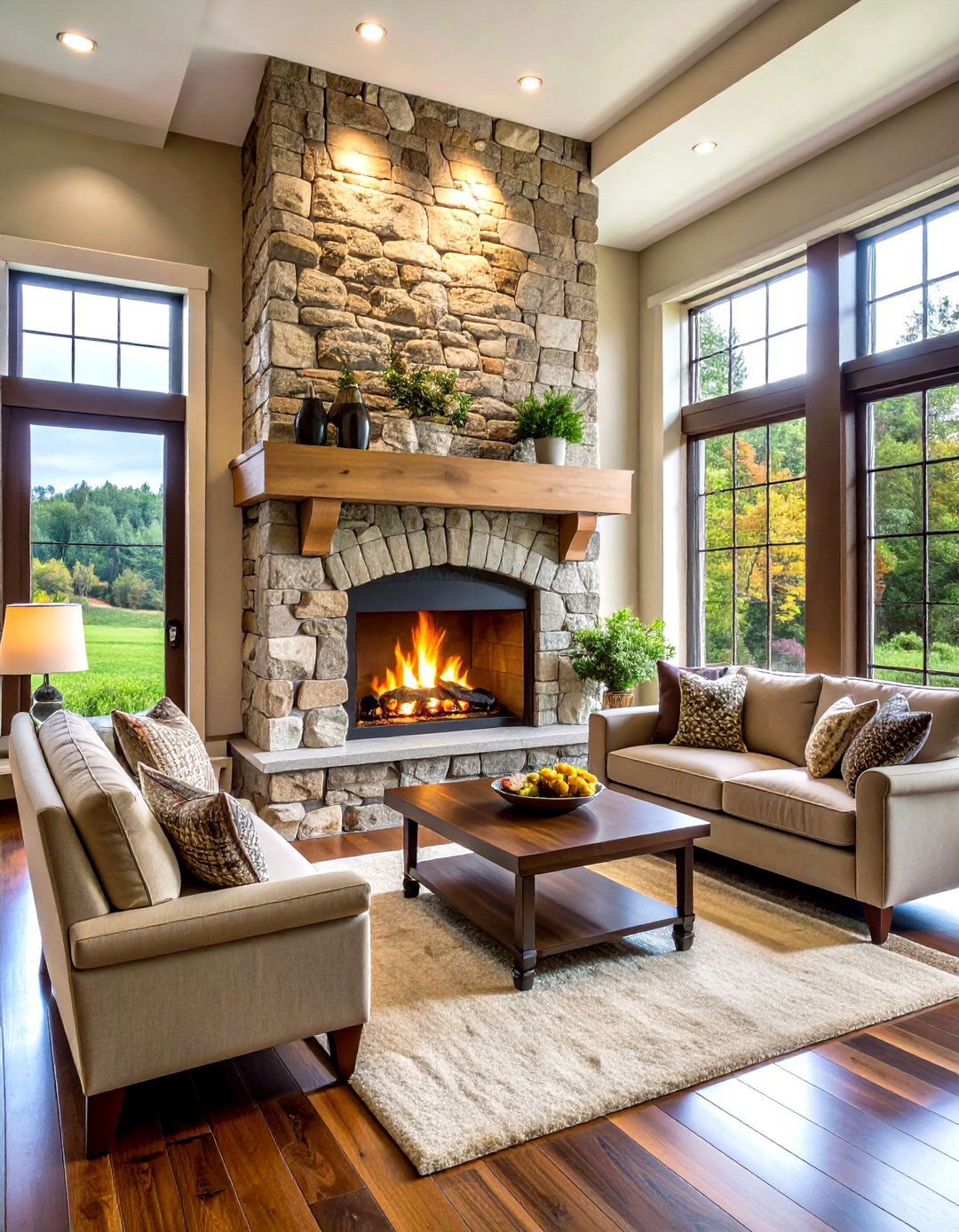
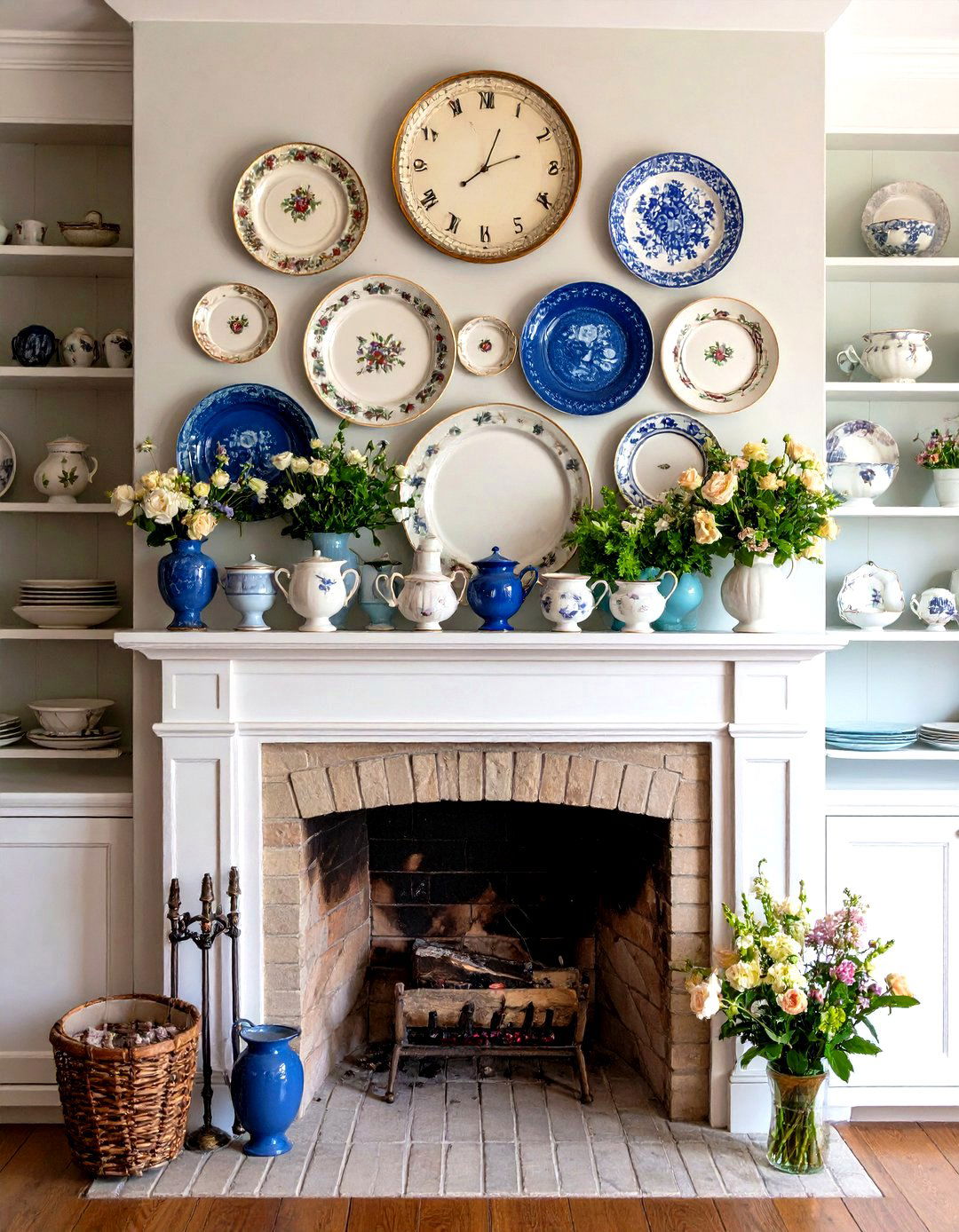
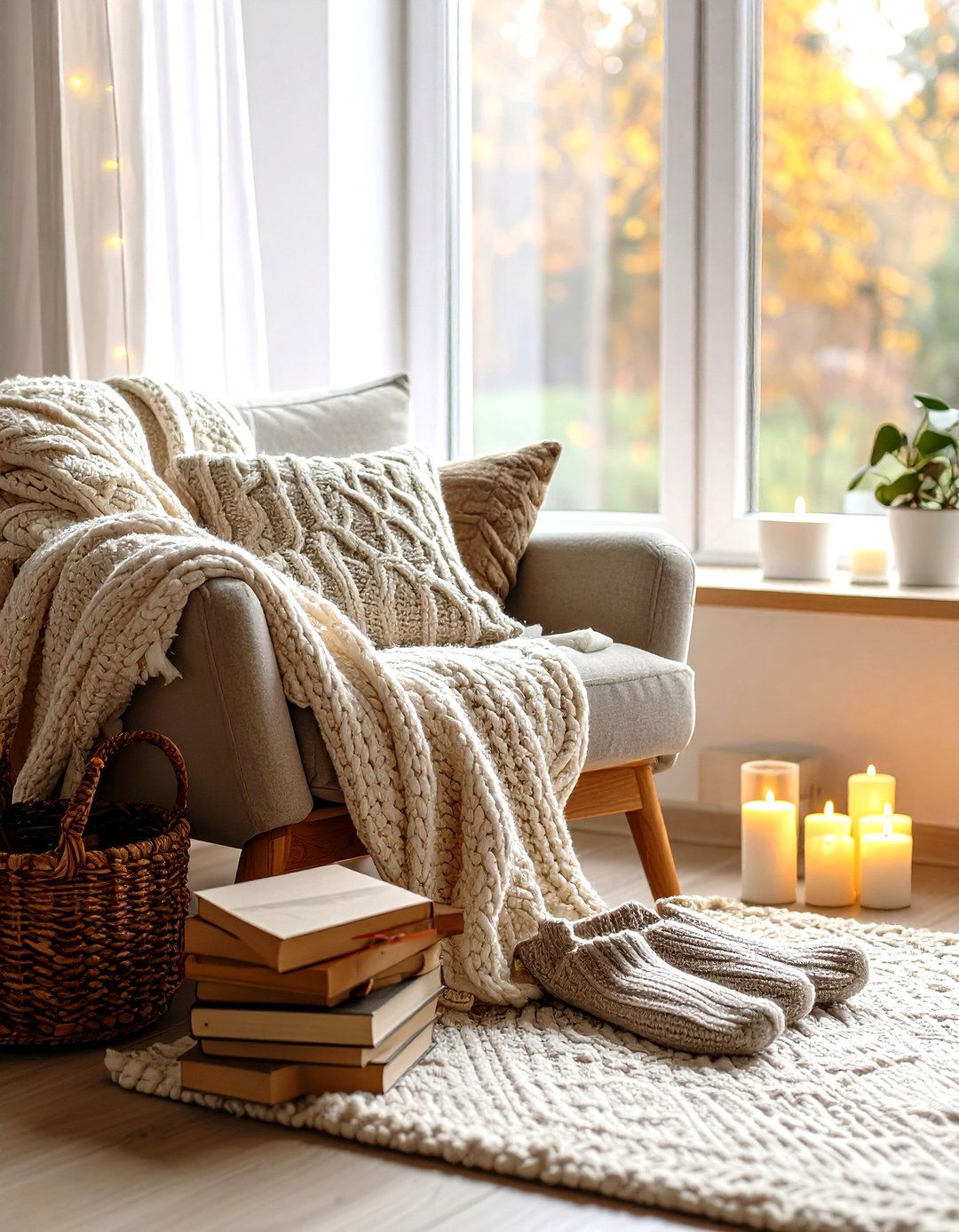
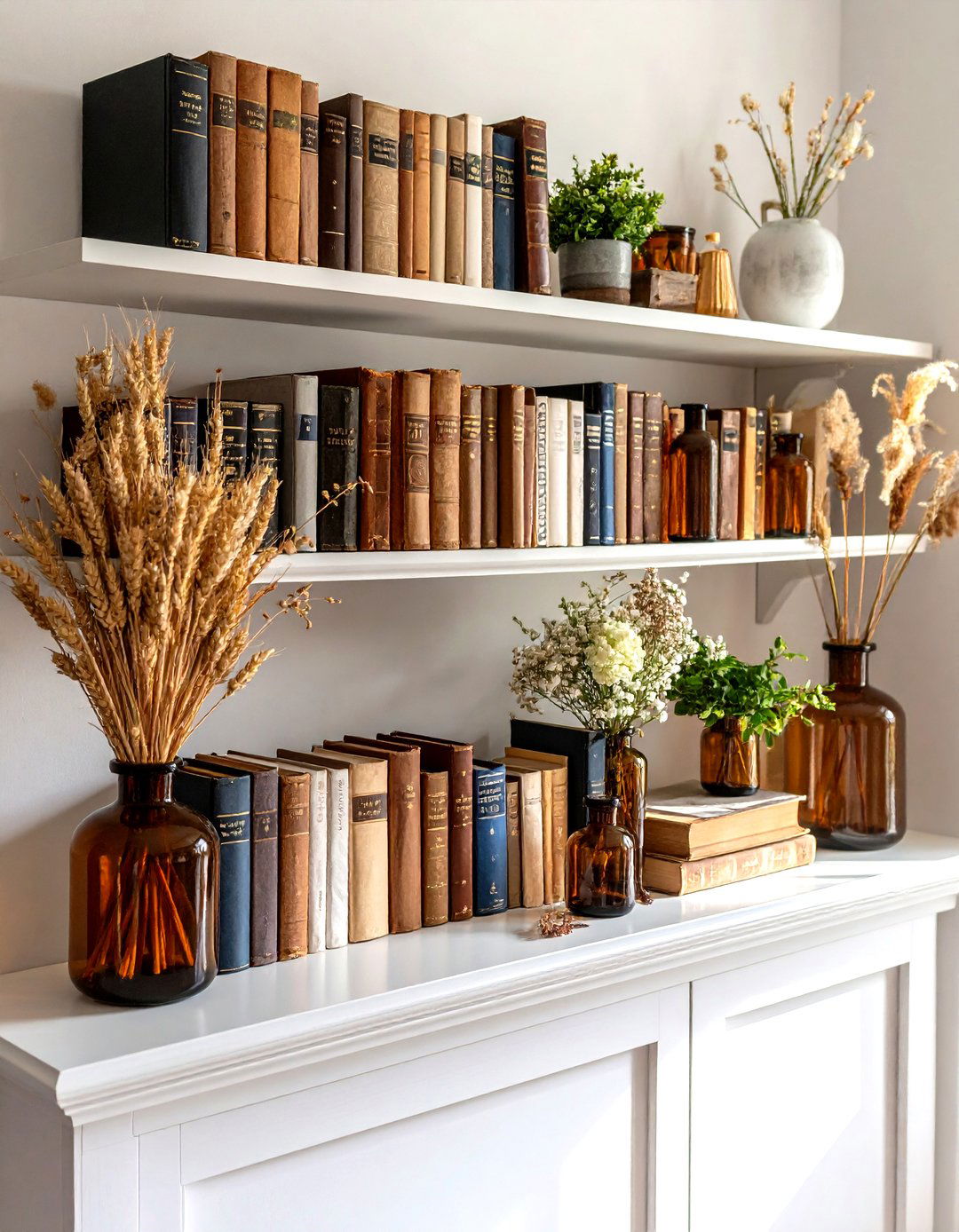
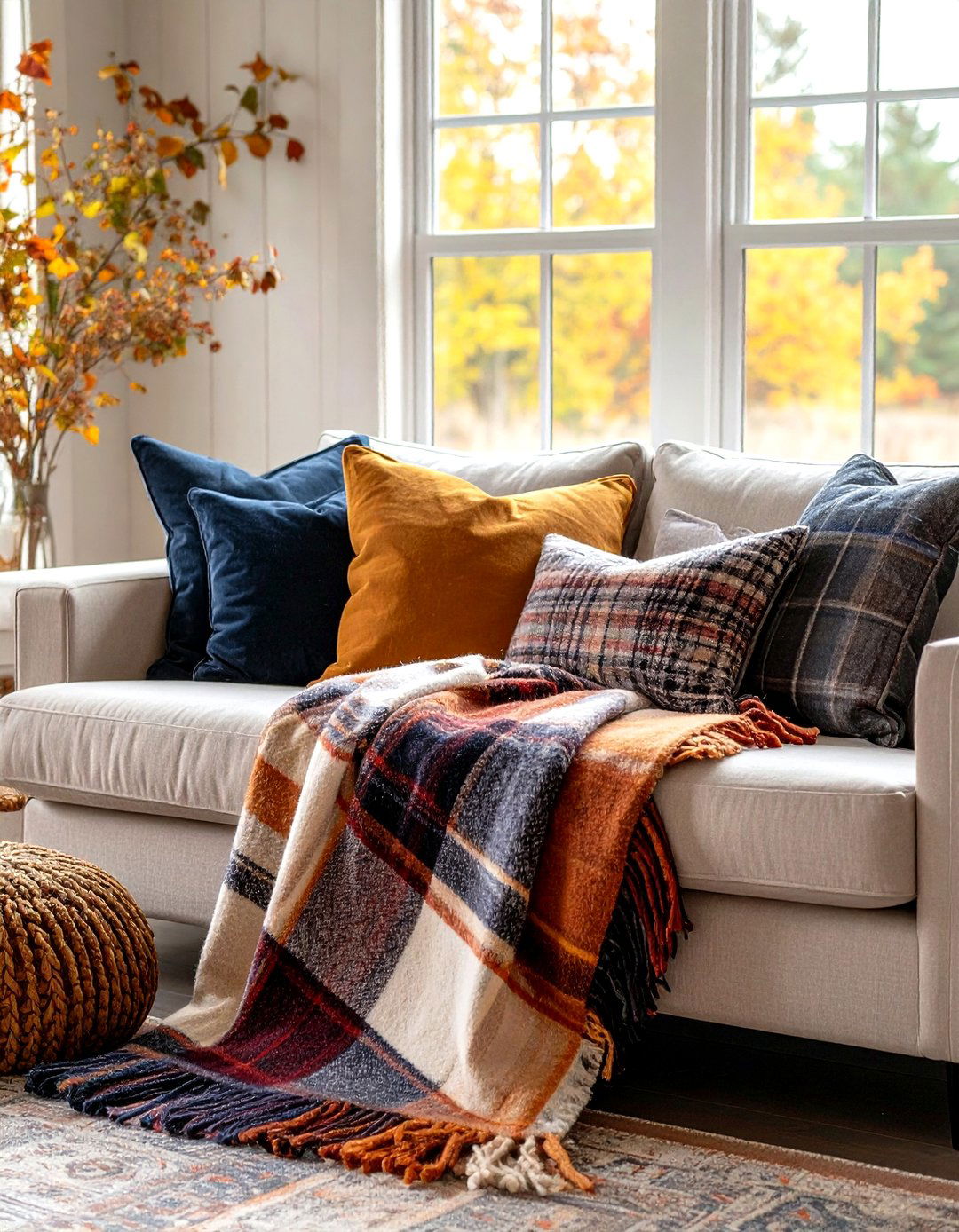


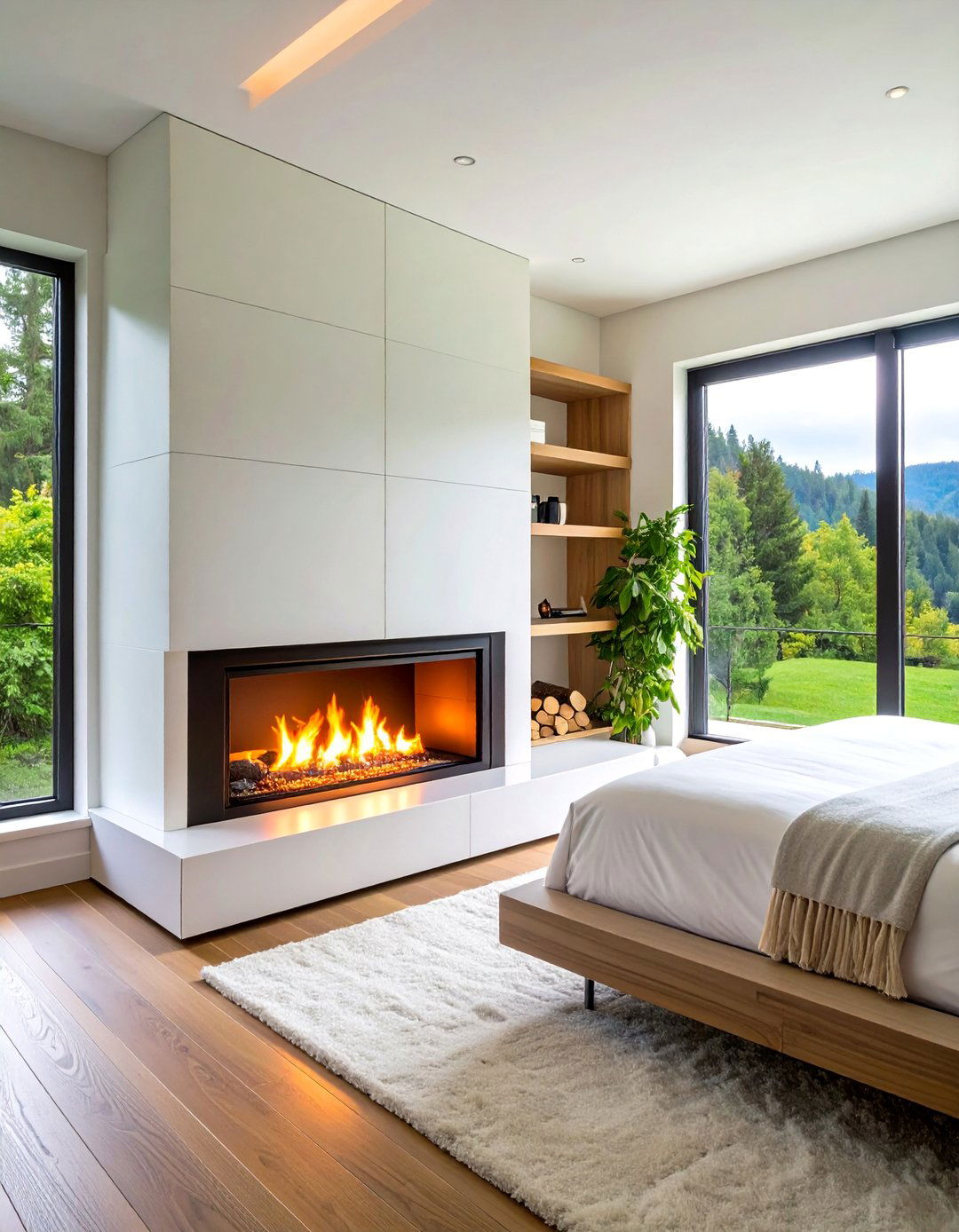
Leave a Reply